- Ben-Hur (1959)
- The Ten Commandments (1956)
- Lawrence of Arabia (1962)
- Schindler's List (1993)
- Roots Duology (1977)
- The Godfather Trilogy (1972)
- The Bridge on the River Kwai (1957)
- North and South Duology (1985)
- Star Wars Trilogy (1977)
- Braveheart (1995)
- Indiana Jones Trilogy (1981)
- Gone with the Wind (1939)
- The Birth of a Nation (1915)
- Spartacus (1960)
- Rocky Pentalogy (1976)
- 2001: A Space Odyssey (1968)
- Barry Lyndon (1975)
- The Last Emperor (1987)
- All Quiet on the Western Front (1930)
- The Great Escape (1963)
- Citizen Kane (1941)
- Giant (1956)
- Amadeus (1984)
- Dances With Wolves (1990)
- Titanic (1997)
- Cromwell (1970)
- JFK (1991)
- King (1978)
- The Last of the Mohicans (1992)
- Empire of the Sun (1987)
- The Big Country (1958)
- Apocalypse Now (1979)
- The Color Purple (1985)
- The Shawshank Redemption (1994)
- Lion of the Desert (1980)
- Glory (1989)
- The Magnificent Ambersons (1942)
- Nashville (1975)
- Born on the Fourth of July (1989)
- Rob Roy (1995)
- El Cid (1961)
- Anne of the Thousand Days (1969)
- Lord Jim (1965)
- Goodfellas (1990)
- Cleopatra (1963)
- Hawaii (1966)
- Robin Hood: Prince of Thieves (1991)
- Lean on Me (1989)
- Patton (1970)
- Separate But Equal (1991)
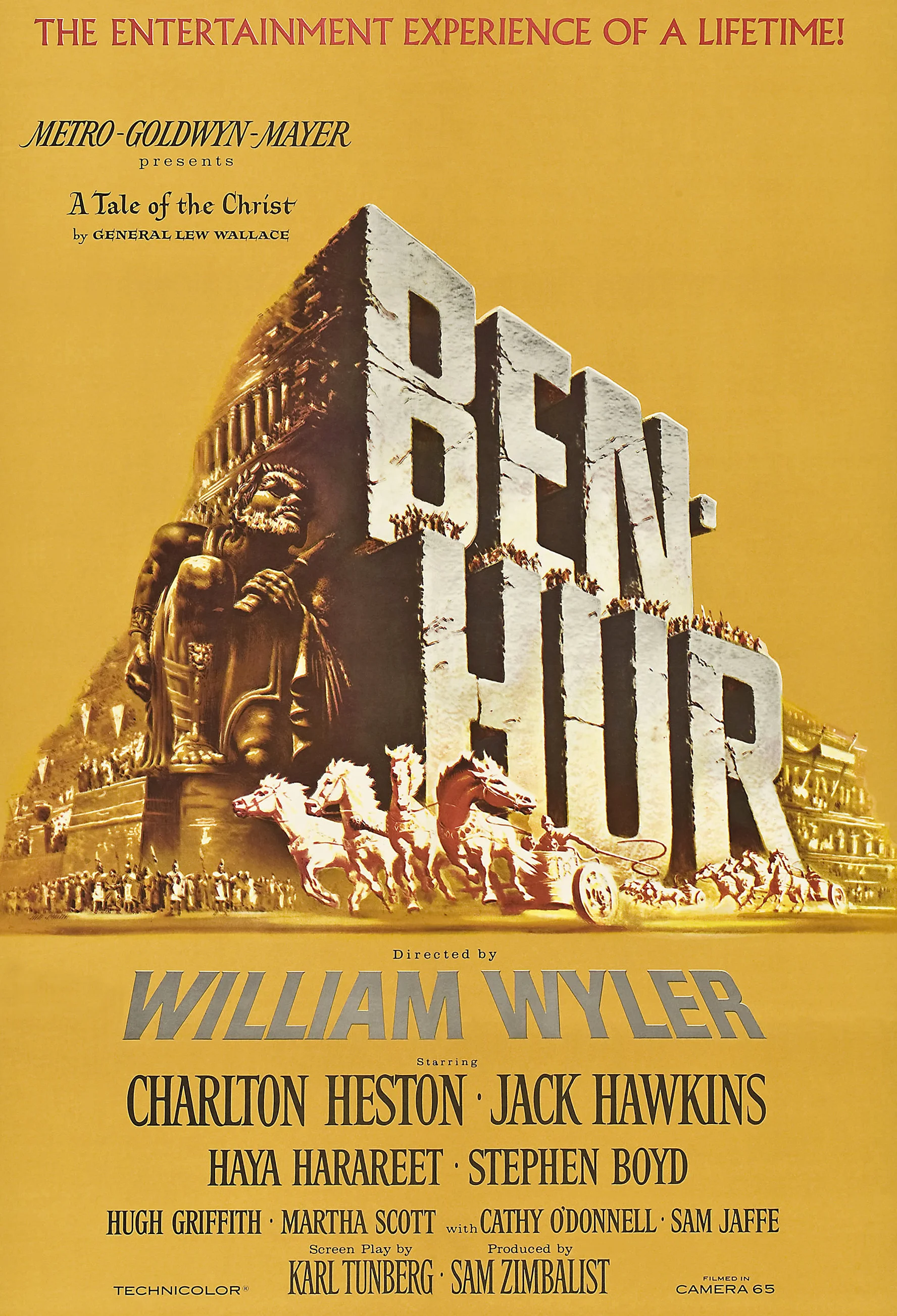 The epic of all epics, it's a big-budget picture amassing over 15,000 extras. Rome has never been so
glorious-looking since the fall of the empire. The greatest and the most breathtaking climax comes during the
chariot race. That scene is the reason alone the epic remains an insurmountable work of cinema. Although it's
the highlight of Ben-Hur, the movie is much more than that which includes the rise of Jesus Christ.
The epic of all epics, it's a big-budget picture amassing over 15,000 extras. Rome has never been so
glorious-looking since the fall of the empire. The greatest and the most breathtaking climax comes during the
chariot race. That scene is the reason alone the epic remains an insurmountable work of cinema. Although it's
the highlight of Ben-Hur, the movie is much more than that which includes the rise of Jesus Christ.
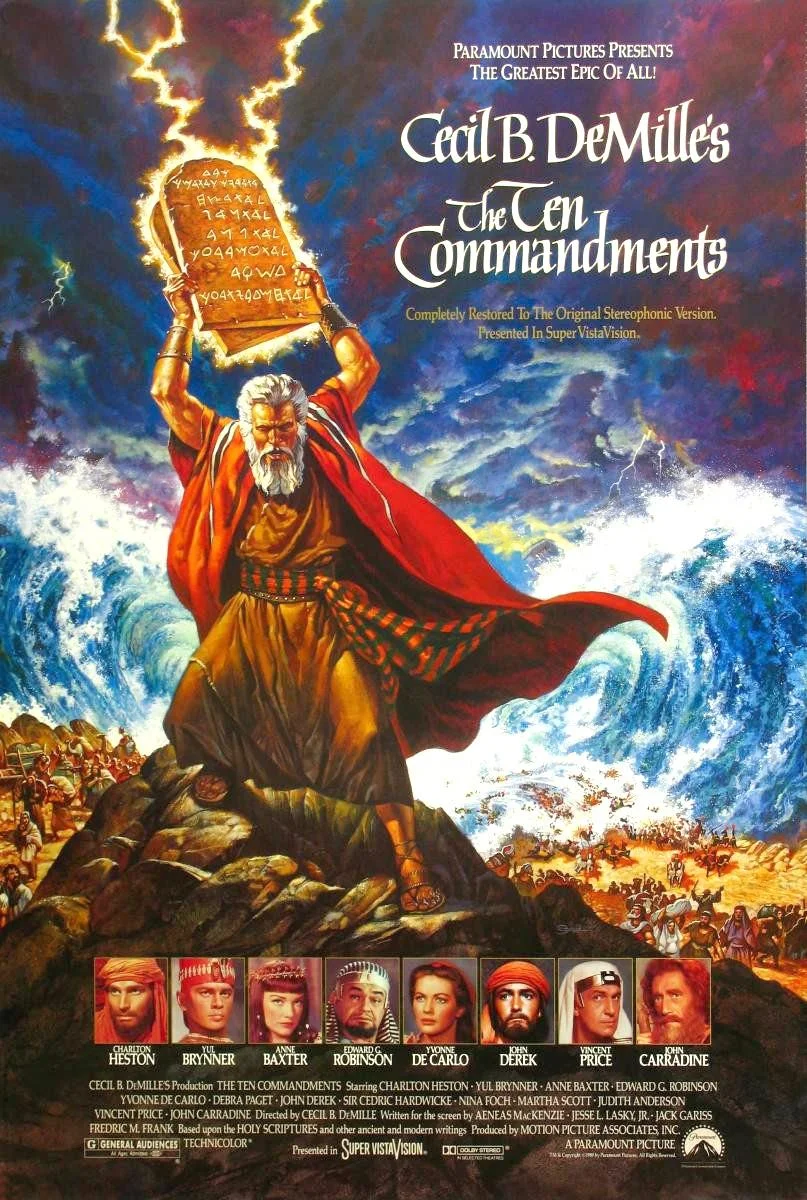 It's one of the finest movies made, a wondrous spectacle with outstanding hallmarks of what makes an epic. The
parting of the Red Sea by Moses is a sight to behold, the clincher for a lone Academy Award win in Special Effects
category, and it's still unbelievable for 1956. Charlton Heston will always be the King of Epics:
The Ten Commandments, Ben-Hur, and El Cid. Not to miss is the strong performance by Yul
Brynner.
It's one of the finest movies made, a wondrous spectacle with outstanding hallmarks of what makes an epic. The
parting of the Red Sea by Moses is a sight to behold, the clincher for a lone Academy Award win in Special Effects
category, and it's still unbelievable for 1956. Charlton Heston will always be the King of Epics:
The Ten Commandments, Ben-Hur, and El Cid. Not to miss is the strong performance by Yul
Brynner.
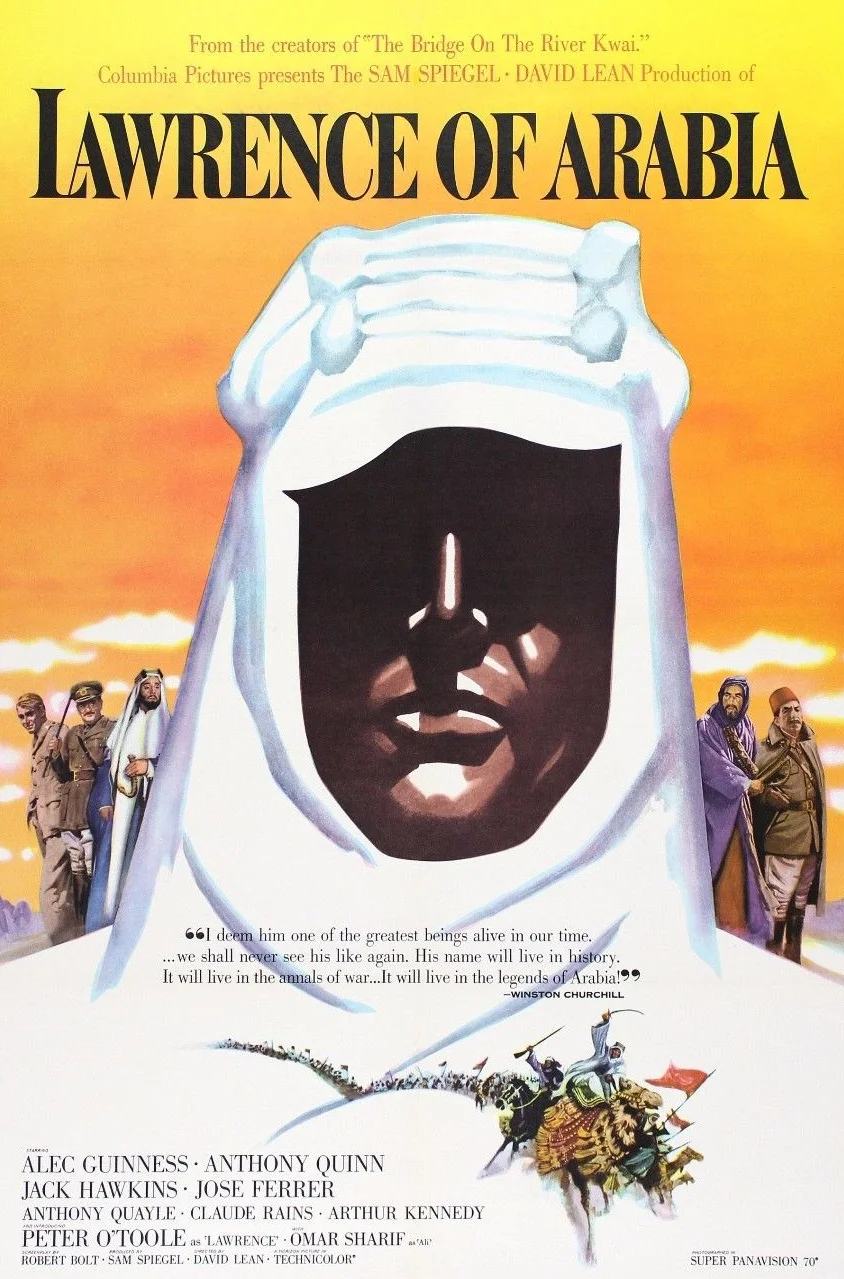 A magnificently made masterpiece, it's David Lean's magnum opus. One of the most remarkable jobs he did with his
characters is not only to make them larger than life but also mysterious in terms of their ambitions and desires.
Thanks to Freddie Young's spellbinding cinematography, it's impossible to deny the power of the desert that
Lawrence of Arabia brings to the screen.
A magnificently made masterpiece, it's David Lean's magnum opus. One of the most remarkable jobs he did with his
characters is not only to make them larger than life but also mysterious in terms of their ambitions and desires.
Thanks to Freddie Young's spellbinding cinematography, it's impossible to deny the power of the desert that
Lawrence of Arabia brings to the screen.
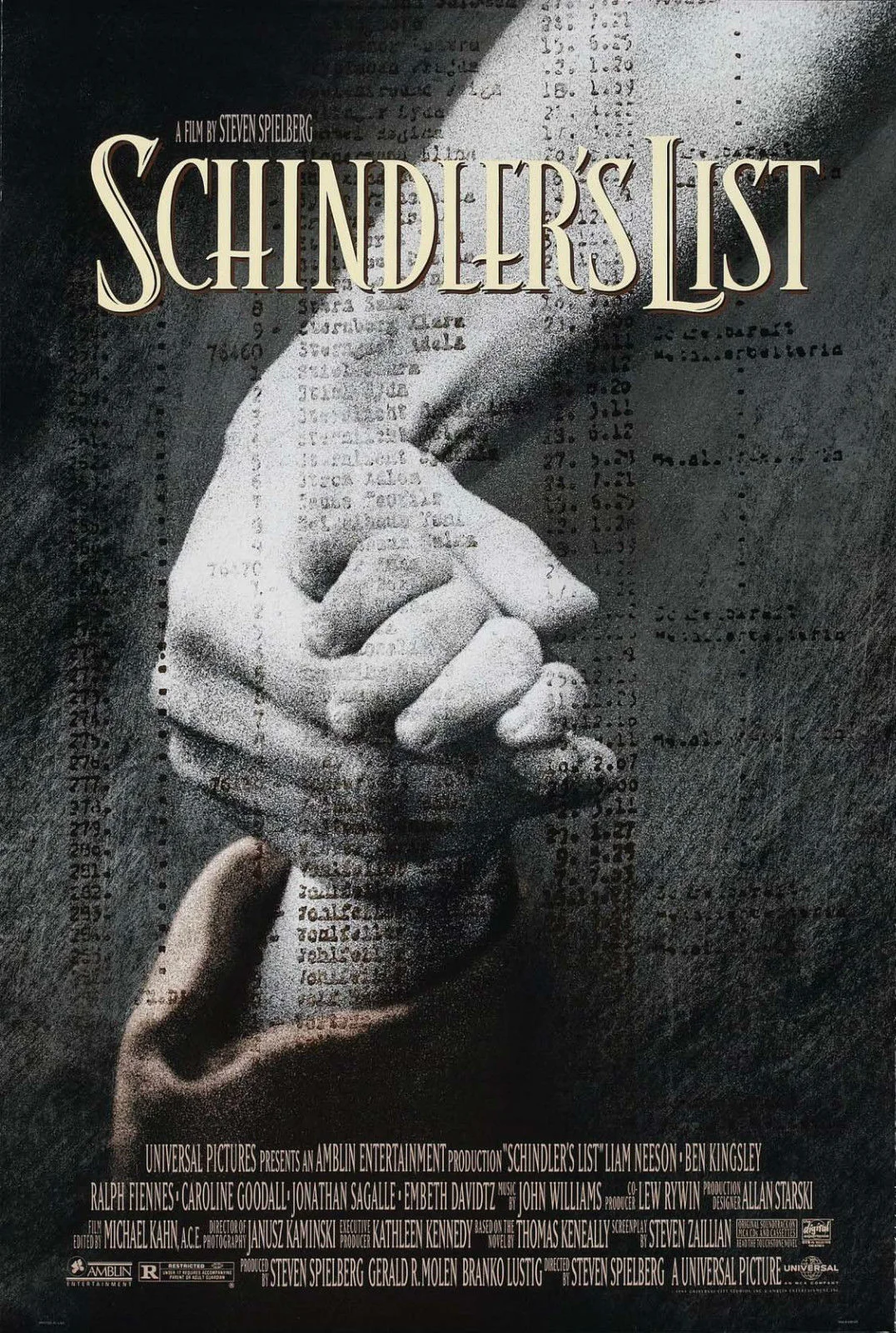 This is the best picture of the decade. It's what I see in books about the Holocaust: Nazi brutality in black
and white. Schindler's List is the stark truth of what happened in German-occupied Europe from 1933 to
1945. There are many powerful scenes that are beyond belief. Steven Spielberg is to be praised for the singular
cinematic achievement.
This is the best picture of the decade. It's what I see in books about the Holocaust: Nazi brutality in black
and white. Schindler's List is the stark truth of what happened in German-occupied Europe from 1933 to
1945. There are many powerful scenes that are beyond belief. Steven Spielberg is to be praised for the singular
cinematic achievement.
 If there's a definitive black American motion picture, it's Roots followed by
Roots: The Next Generations. Starting out as a novel in 1976 by Alex Haley about nine generations of
African descendants, Roots was developed into a TV miniseries one year later, and just about everybody in
the country tuned in, setting viewership records. There's nothing like it.
If there's a definitive black American motion picture, it's Roots followed by
Roots: The Next Generations. Starting out as a novel in 1976 by Alex Haley about nine generations of
African descendants, Roots was developed into a TV miniseries one year later, and just about everybody in
the country tuned in, setting viewership records. There's nothing like it.
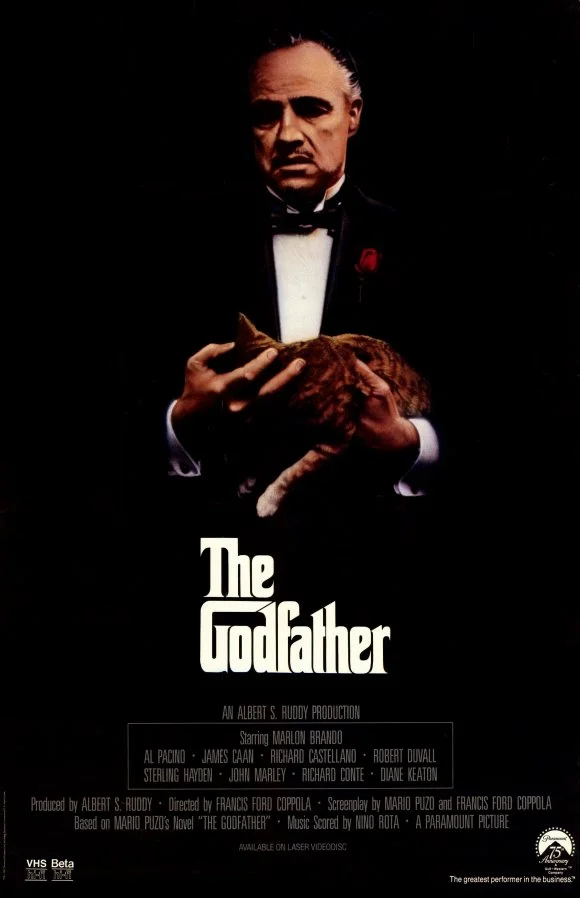 The Godfather trilogy is a masterpiece with many big-time actors, spanning at least five generations
of Corleone's family in the mafia. There are numerous classic scenes, lines, and movie moments that make the
saga unforgettable. Gordon Willis' cinematography is fantastic throughout, and that's why he has the moniker:
Prince of Darkness.
The Godfather trilogy is a masterpiece with many big-time actors, spanning at least five generations
of Corleone's family in the mafia. There are numerous classic scenes, lines, and movie moments that make the
saga unforgettable. Gordon Willis' cinematography is fantastic throughout, and that's why he has the moniker:
Prince of Darkness.
 "Madness. Madness!" The exclamation at the end says it all about The Bridge on the River Kwai, a thrilling
WWII picture with William Holden and Alec Guinness at their finest. Against them is the massive bridge that
overshadows everything and therefore must be brought down.
"Madness. Madness!" The exclamation at the end says it all about The Bridge on the River Kwai, a thrilling
WWII picture with William Holden and Alec Guinness at their finest. Against them is the massive bridge that
overshadows everything and therefore must be brought down.
 Through the love stories and differences of philosophies, there's so much drama that it's hard not to be
absorbed by the subplots while there's a display of many different, attractive-looking costumes. It's a
reflection of the show's quality and high production value, a bona fide masterpiece of Civil War drama. In total,
8,700 pieces of wardrobe were presented, and the lead actresses each wore between 28 and 35 different costumes.
However, skip the third book as it's a massive disappointment.
Through the love stories and differences of philosophies, there's so much drama that it's hard not to be
absorbed by the subplots while there's a display of many different, attractive-looking costumes. It's a
reflection of the show's quality and high production value, a bona fide masterpiece of Civil War drama. In total,
8,700 pieces of wardrobe were presented, and the lead actresses each wore between 28 and 35 different costumes.
However, skip the third book as it's a massive disappointment.
 Famous for the characters and the battle between good and evil as indicated in the opening crawl, nobody can forget
Star Wars and the next two sequels. It changed everything for the sci-fi genre which hasn't been topped
since then. The second part is unique for allowing the bad side to win and not really having a concrete ending.
Famous for the characters and the battle between good and evil as indicated in the opening crawl, nobody can forget
Star Wars and the next two sequels. It changed everything for the sci-fi genre which hasn't been topped
since then. The second part is unique for allowing the bad side to win and not really having a concrete ending.
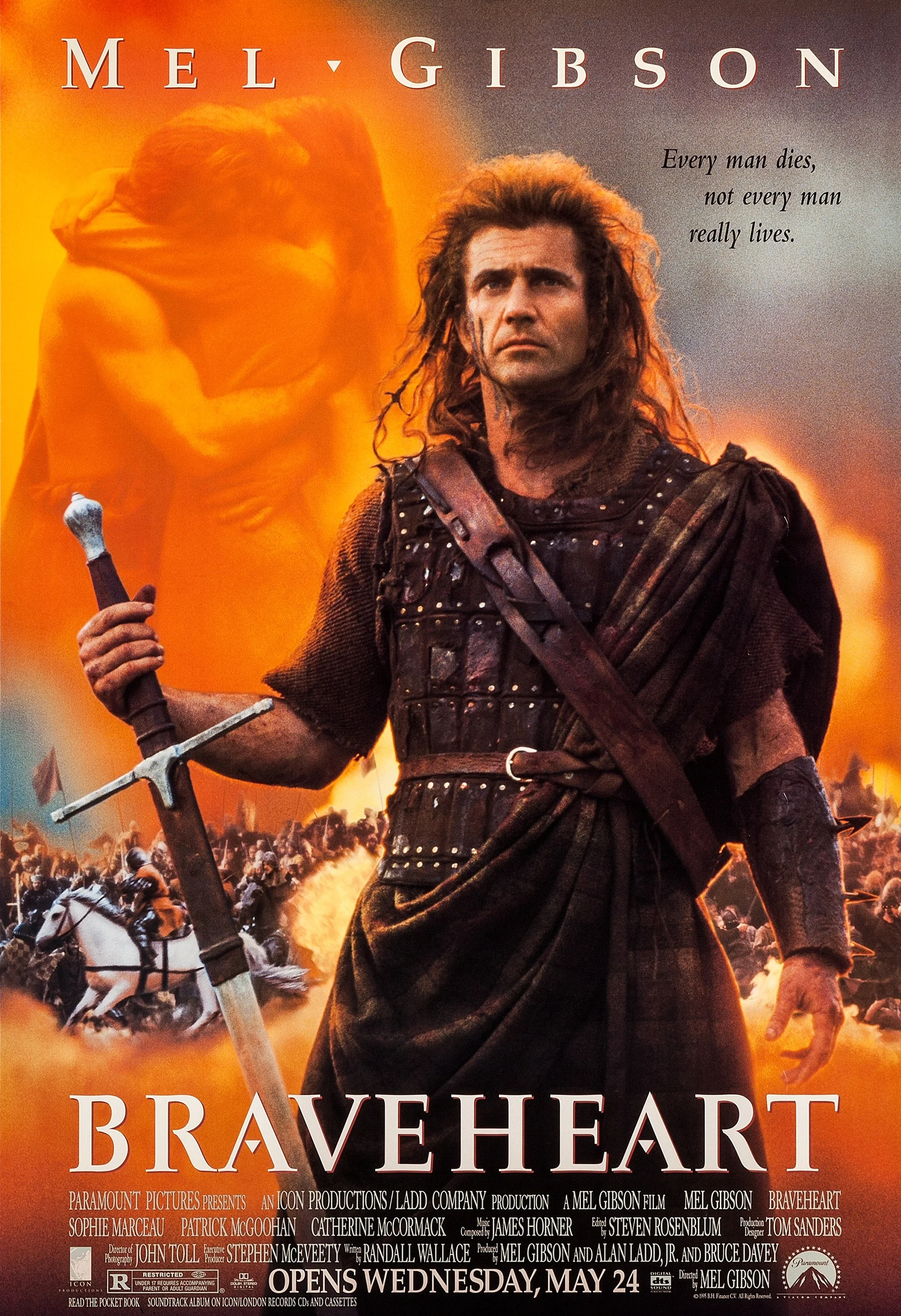 A surprise Oscar winner for Best Picture of 1995, Braveheart is the last great epic war motion picture.
Characters, big, small, clean, dirty, and nameless, all play a large role in scene after scene with so many of
them memorable. Passion is easily felt throughout the wonderful storytelling with a strong script and some of
the most brutal medieval battle scenes ever filmed.
A surprise Oscar winner for Best Picture of 1995, Braveheart is the last great epic war motion picture.
Characters, big, small, clean, dirty, and nameless, all play a large role in scene after scene with so many of
them memorable. Passion is easily felt throughout the wonderful storytelling with a strong script and some of
the most brutal medieval battle scenes ever filmed.
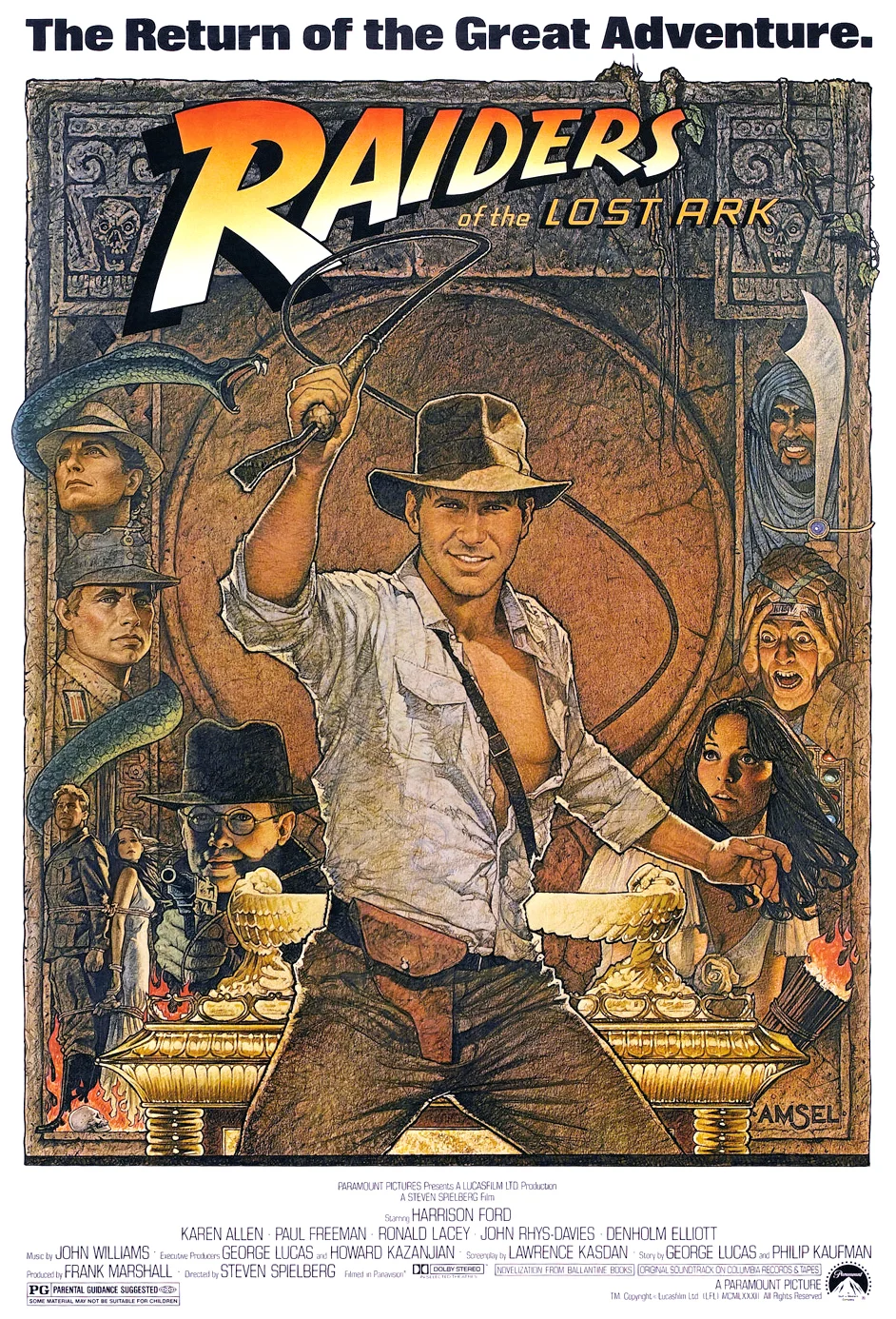 Indiana Jones is the most iconic character ever, and in the quest of history, he takes on a series of adventures
in three outstanding films: Raiders of the Lost Ark, Indiana Jones and the Temple of Doom, and
Indiana Jones and the Last Crusade. They are a must-see for people of all ages because it's what movies
should be about.
Indiana Jones is the most iconic character ever, and in the quest of history, he takes on a series of adventures
in three outstanding films: Raiders of the Lost Ark, Indiana Jones and the Temple of Doom, and
Indiana Jones and the Last Crusade. They are a must-see for people of all ages because it's what movies
should be about.
 As impressive as it can be, Gone with the Wind is a one-of-a-kind picture although it's an extremely long
epic. Doing an excellent job of perpetuating the myths about the Old South which was anything but, it abounds
with excellent performances, a picturesque cinematography, and a sumptuous story.
As impressive as it can be, Gone with the Wind is a one-of-a-kind picture although it's an extremely long
epic. Doing an excellent job of perpetuating the myths about the Old South which was anything but, it abounds
with excellent performances, a picturesque cinematography, and a sumptuous story.
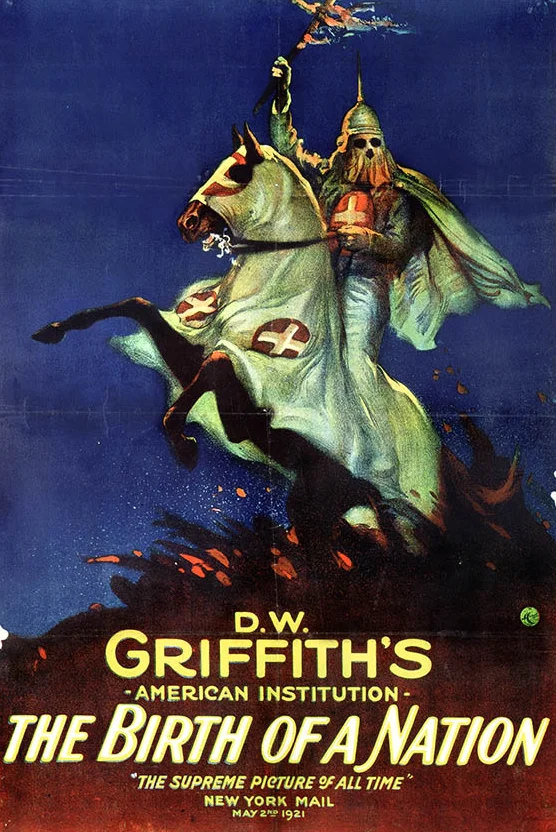 After seeing The Birth of a Nation, Woodrow Wilson famously said, "It is like writing history with
lightning, and my only regret is that it is all so terribly true." Whether he really did or not is besides
the point. The film's place in the annals of cinema is undeniable. It forever changed how movies were made.
Hence, D.W. Griffith is the father of film.
After seeing The Birth of a Nation, Woodrow Wilson famously said, "It is like writing history with
lightning, and my only regret is that it is all so terribly true." Whether he really did or not is besides
the point. The film's place in the annals of cinema is undeniable. It forever changed how movies were made.
Hence, D.W. Griffith is the father of film.
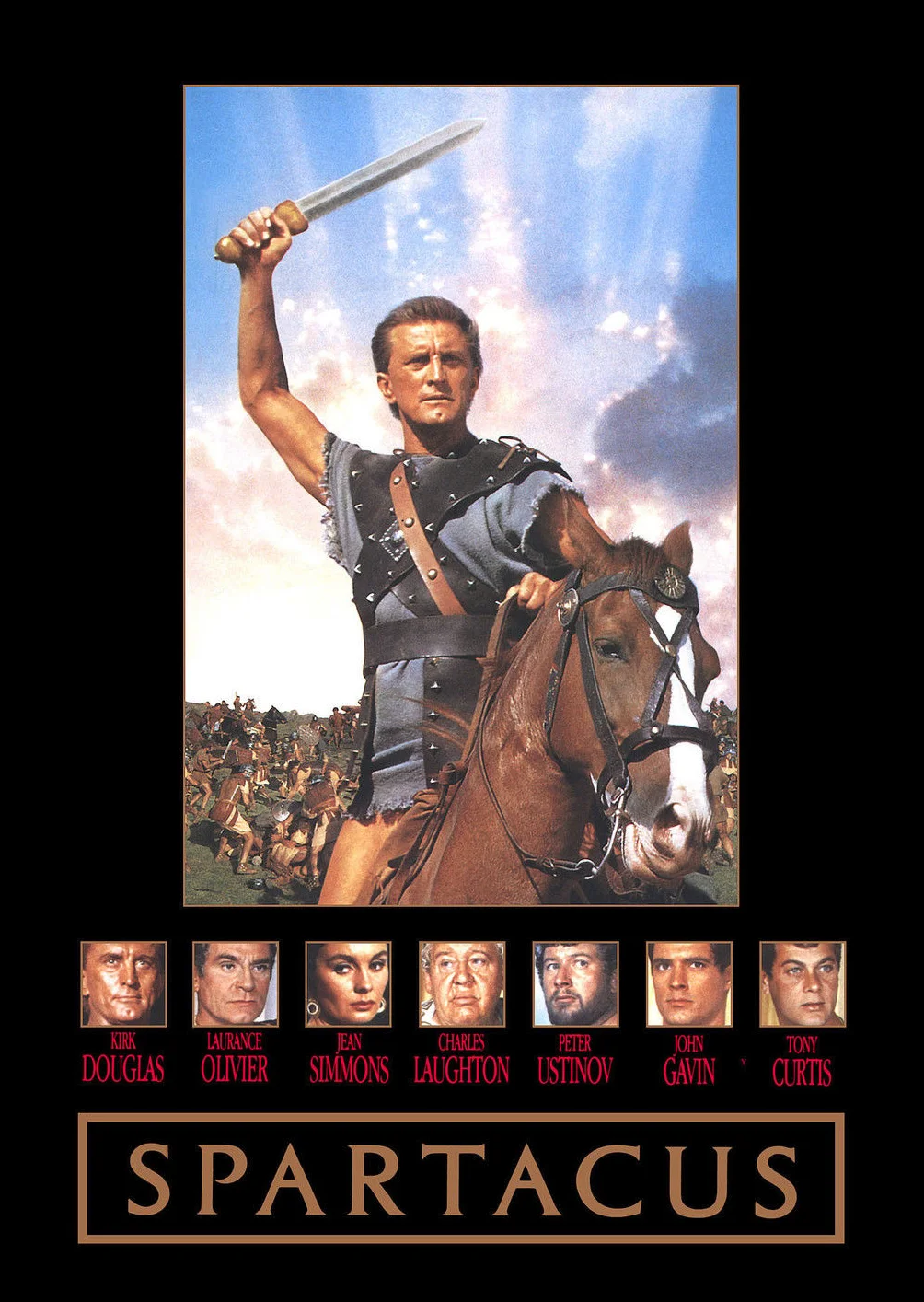 A classic story, Spartacus rivals Ben-Hur in all aspects and nearly succeeds. There are many
famous movie moments such as the waiting game between the eponymous hero and the Ethiopian before the arena match,
the battle formations, the rolling logs on fire, and the ending. Kirk Douglas will always be Spartacus, one of
the most iconic characters in silver screen history.
A classic story, Spartacus rivals Ben-Hur in all aspects and nearly succeeds. There are many
famous movie moments such as the waiting game between the eponymous hero and the Ethiopian before the arena match,
the battle formations, the rolling logs on fire, and the ending. Kirk Douglas will always be Spartacus, one of
the most iconic characters in silver screen history.
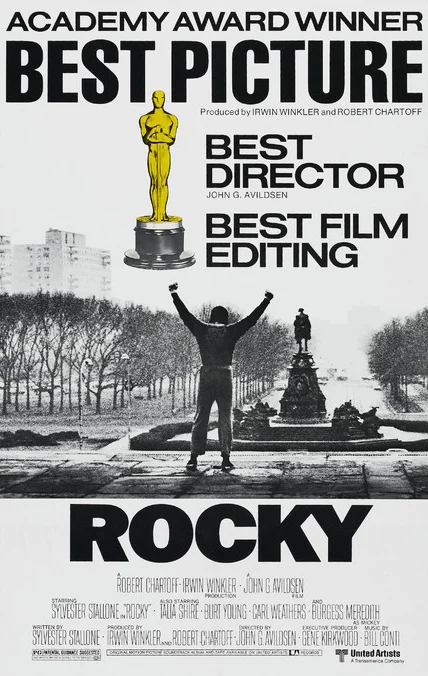 When people talk about the power of cinema, the best examples are the training montages in any of the first
four Rocky movies. They're uplifting, powerful, and unforgettable. The original is not just an outstanding
boxing film; it has the romance of a lifetime. The ending is an all-time great. Terrific acting and direction
transcend Rocky into a moving motion picture for all people. The superfights between Rocky Balboa and
Apollo Creed, Clubber Lang, Ivan Drago, and Tommy Gunn are outstanding.
When people talk about the power of cinema, the best examples are the training montages in any of the first
four Rocky movies. They're uplifting, powerful, and unforgettable. The original is not just an outstanding
boxing film; it has the romance of a lifetime. The ending is an all-time great. Terrific acting and direction
transcend Rocky into a moving motion picture for all people. The superfights between Rocky Balboa and
Apollo Creed, Clubber Lang, Ivan Drago, and Tommy Gunn are outstanding.
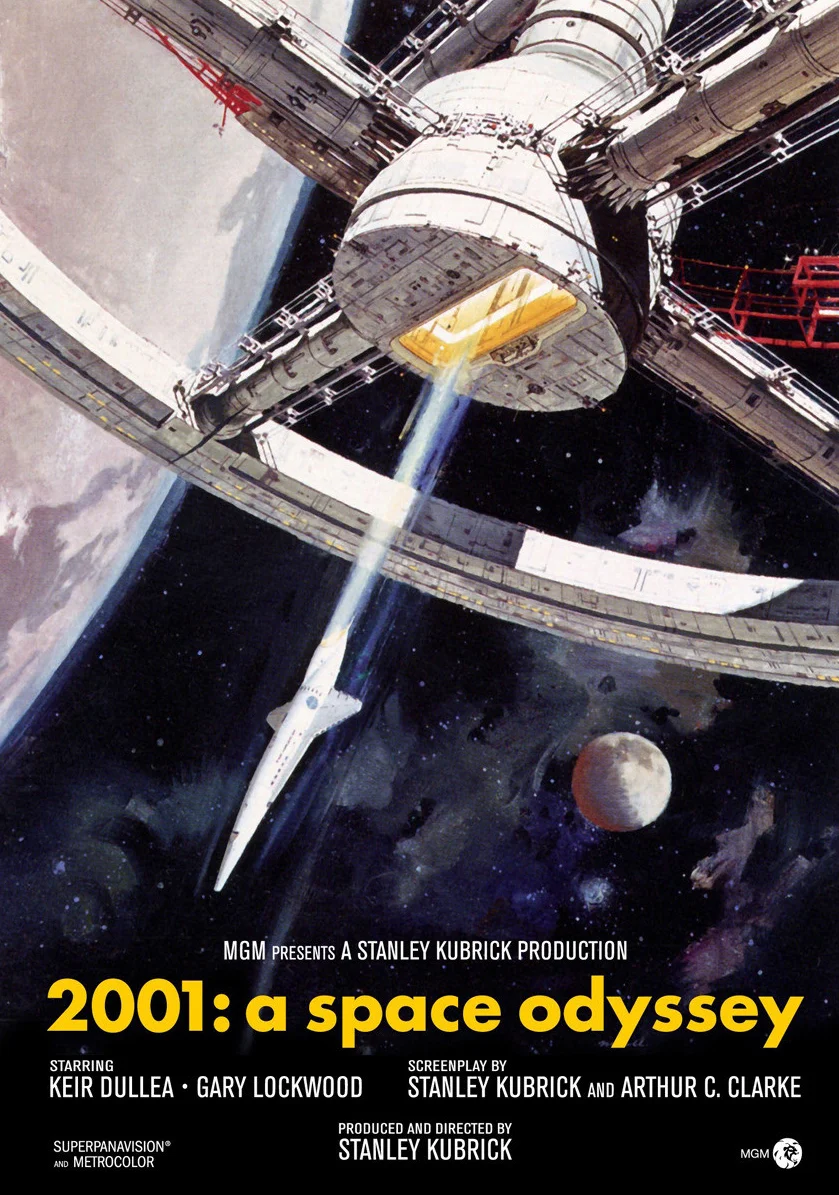 Birth. Evolution. Mankind. Age. Exploration. Universe. Death. 2001: A Space Odyssey...you'll never see
anything like it, a brilliant visionary picture that's abstract, beautiful, complicated, and simple all at once.
Considering the year the movie was made in—and that's not 1968—but 1963 which is five years of work
to make the vision possible.
Birth. Evolution. Mankind. Age. Exploration. Universe. Death. 2001: A Space Odyssey...you'll never see
anything like it, a brilliant visionary picture that's abstract, beautiful, complicated, and simple all at once.
Considering the year the movie was made in—and that's not 1968—but 1963 which is five years of work
to make the vision possible.
 Ryan O'Neal's finest hour in acting is showcased in Barry Lyndon, a superbly photographed flick that
defines filmmaking in every bit of the word. It's thorough masterpiece for an 18th century British period picture,
and there are many things to like: the story, the acting, the costumes, the in/exterior sets (the latter was shot
on location in Ireland, England, and West Germany and the former in London), the deliberate pace, the coldness,
and, most of all, the cinematography.
Ryan O'Neal's finest hour in acting is showcased in Barry Lyndon, a superbly photographed flick that
defines filmmaking in every bit of the word. It's thorough masterpiece for an 18th century British period picture,
and there are many things to like: the story, the acting, the costumes, the in/exterior sets (the latter was shot
on location in Ireland, England, and West Germany and the former in London), the deliberate pace, the coldness,
and, most of all, the cinematography.
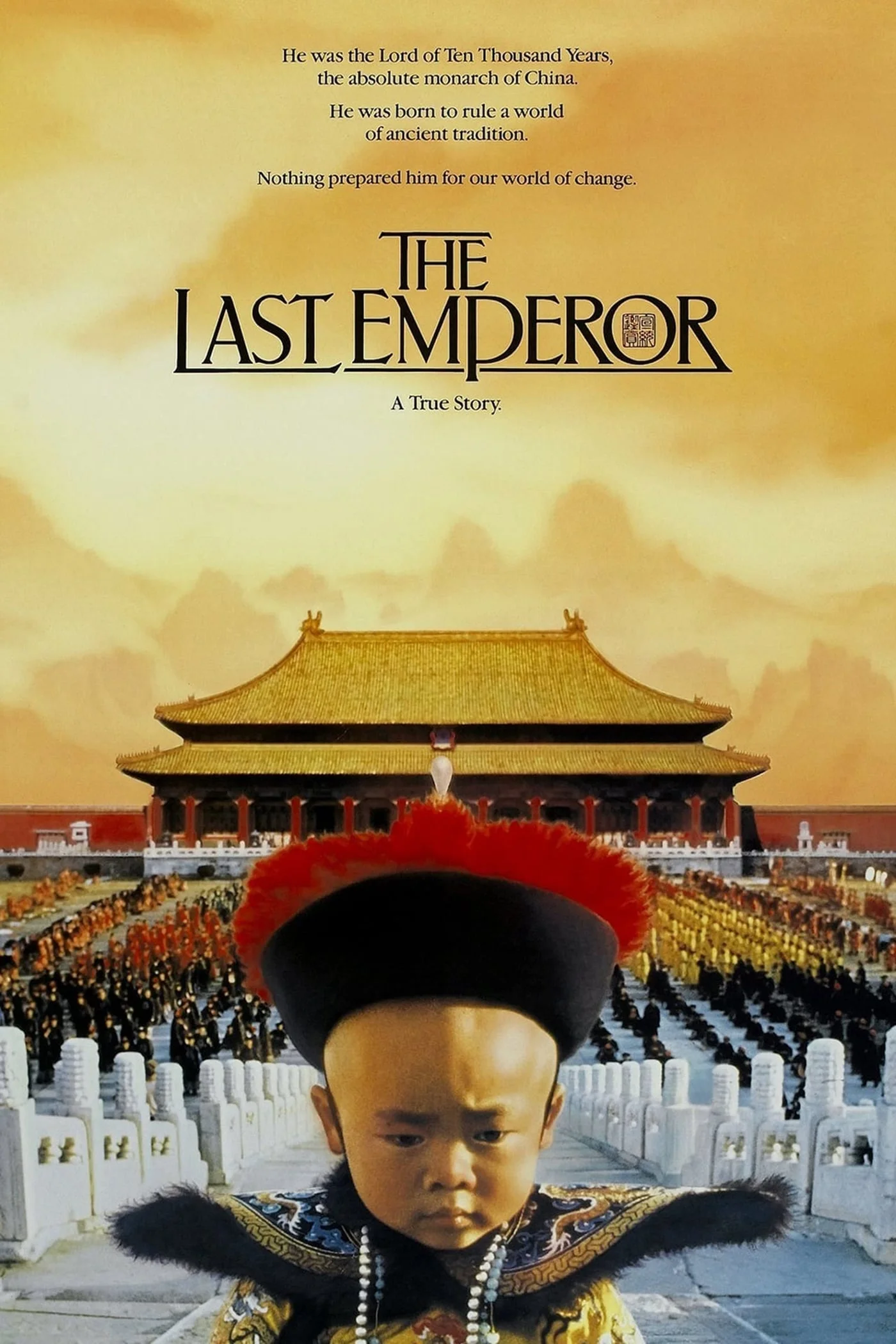 Buoyed by Vittorio Storaro's Oscar-winning cinematography, especially when it comes to inside the Forbidden City,
over 19,000 extras are used to tell a powerful tale of Puyi: how the last emperor of China is crowned at the age
of two years and ten months at an unfortunate timing only to become a common peasant a half-century later.
Buoyed by Vittorio Storaro's Oscar-winning cinematography, especially when it comes to inside the Forbidden City,
over 19,000 extras are used to tell a powerful tale of Puyi: how the last emperor of China is crowned at the age
of two years and ten months at an unfortunate timing only to become a common peasant a half-century later.
 The cinematography is stunning, even by 1920's standards. So many emotions are felt for the characters. It's
understandable as to why the Nazis wanted to burn the book because of its defeating message that war is useless
and trivially pointless. All Quiet on the Western Front carries so much relevance, no matter at what
period of time it's seen in.
The cinematography is stunning, even by 1920's standards. So many emotions are felt for the characters. It's
understandable as to why the Nazis wanted to burn the book because of its defeating message that war is useless
and trivially pointless. All Quiet on the Western Front carries so much relevance, no matter at what
period of time it's seen in.
 By far one of the most thrilling movies made, The Great Escape...there's nothing like it. Steve McQueen's
performance as Captain Virgil Hilts, aka The Cooler King, cements his status as an international superstar
because of the motorcycle scenes. Who can forget the iconic jump at the end? The chemistry of the all-star cast,
the story, and the dramatic escape are the reasons behind the film's quick pace.
By far one of the most thrilling movies made, The Great Escape...there's nothing like it. Steve McQueen's
performance as Captain Virgil Hilts, aka The Cooler King, cements his status as an international superstar
because of the motorcycle scenes. Who can forget the iconic jump at the end? The chemistry of the all-star cast,
the story, and the dramatic escape are the reasons behind the film's quick pace.
 When Citizen Kane was released, Orson Welles reached the top of the mountain and became an immortal god
of cinema. Afterwards, he had nowhere to go but down...down he went hard. It puts everything about cinema into
perspective. An important film for numerous reasons, it's one of the best-shot works of art in terms of
storytelling through the power of cinematography. The controversy behind the scenes is the reason for its mammoth
reputation which makes the whole thing fascinating.
When Citizen Kane was released, Orson Welles reached the top of the mountain and became an immortal god
of cinema. Afterwards, he had nowhere to go but down...down he went hard. It puts everything about cinema into
perspective. An important film for numerous reasons, it's one of the best-shot works of art in terms of
storytelling through the power of cinematography. The controversy behind the scenes is the reason for its mammoth
reputation which makes the whole thing fascinating.
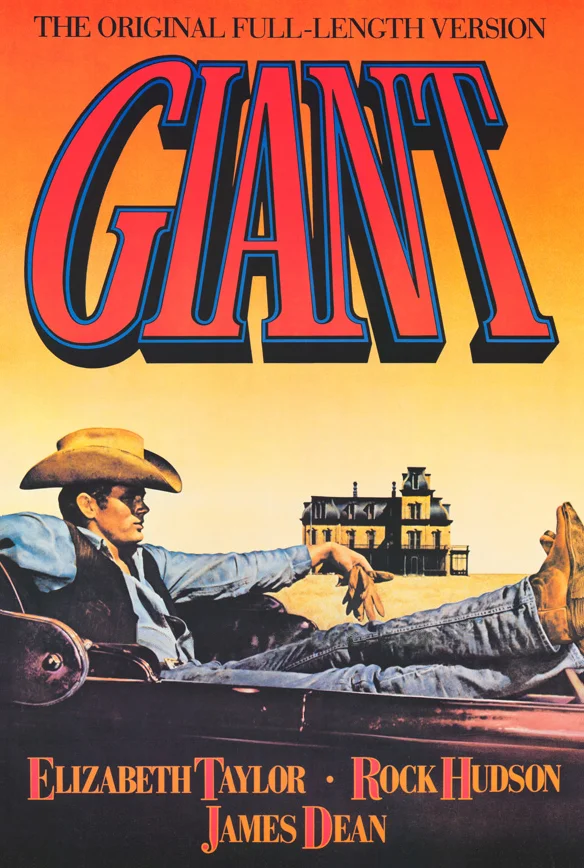 Never mind the film's running length, Giant is simply a spectacle, just as big as Texas. Many will see it
just for James Dean's final performance. Yet Rock Hudson and Elizabeth Taylor are the true stars of the show, and
they're outstanding together. The biggest winner of them all is George Stevens' direction because Giant
is almost Citizen Kane and Gone with the Wind all rolled into one.
Never mind the film's running length, Giant is simply a spectacle, just as big as Texas. Many will see it
just for James Dean's final performance. Yet Rock Hudson and Elizabeth Taylor are the true stars of the show, and
they're outstanding together. The biggest winner of them all is George Stevens' direction because Giant
is almost Citizen Kane and Gone with the Wind all rolled into one.
 Some have said Amadeus is boring. Some have said Amadeus is too long. And some have said
Amadeus is nothing more than the music. But they all miss out the masterpiece in Amadeus. It's
unbelievable watching F. Murray Abraham and Tom Hulce perform at their absolute best, and they'll be remembered
forever for this film. The writing is first-rate. So are the interior set decoration, costumes, and cinematography.
Some have said Amadeus is boring. Some have said Amadeus is too long. And some have said
Amadeus is nothing more than the music. But they all miss out the masterpiece in Amadeus. It's
unbelievable watching F. Murray Abraham and Tom Hulce perform at their absolute best, and they'll be remembered
forever for this film. The writing is first-rate. So are the interior set decoration, costumes, and cinematography.
 What I love is the simplicity that's left open for translation. Easily the best part is how Dunbar is immersed
into the Sioux culture. Near the end, his fellow soldiers show up. Dunbar takes place among them, but he looks
out of place. Hence, it's the key moment of Dances With Wolves which is about human acceptance without bias.
Not to be missed is the lush cinematography, and the buffalo hunt scene is terrific. Graham Greene and Rodney A.
Grant turn in powerful performances.
What I love is the simplicity that's left open for translation. Easily the best part is how Dunbar is immersed
into the Sioux culture. Near the end, his fellow soldiers show up. Dunbar takes place among them, but he looks
out of place. Hence, it's the key moment of Dances With Wolves which is about human acceptance without bias.
Not to be missed is the lush cinematography, and the buffalo hunt scene is terrific. Graham Greene and Rodney A.
Grant turn in powerful performances.
 Titanic isn't exactly a huge epic picture in the likes of Gone with the Wind,
Lawrence of Arabia, and Ben-Hur, but it's an epic nevertheless. While the romantic aspect is
enjoyable, what's even more impressive is the ship per se. James Cameron is a wunderkind because of how he's able
to blend the visual effects with cinema so effortlessly well that it all looks as one.
Titanic isn't exactly a huge epic picture in the likes of Gone with the Wind,
Lawrence of Arabia, and Ben-Hur, but it's an epic nevertheless. While the romantic aspect is
enjoyable, what's even more impressive is the ship per se. James Cameron is a wunderkind because of how he's able
to blend the visual effects with cinema so effortlessly well that it all looks as one.
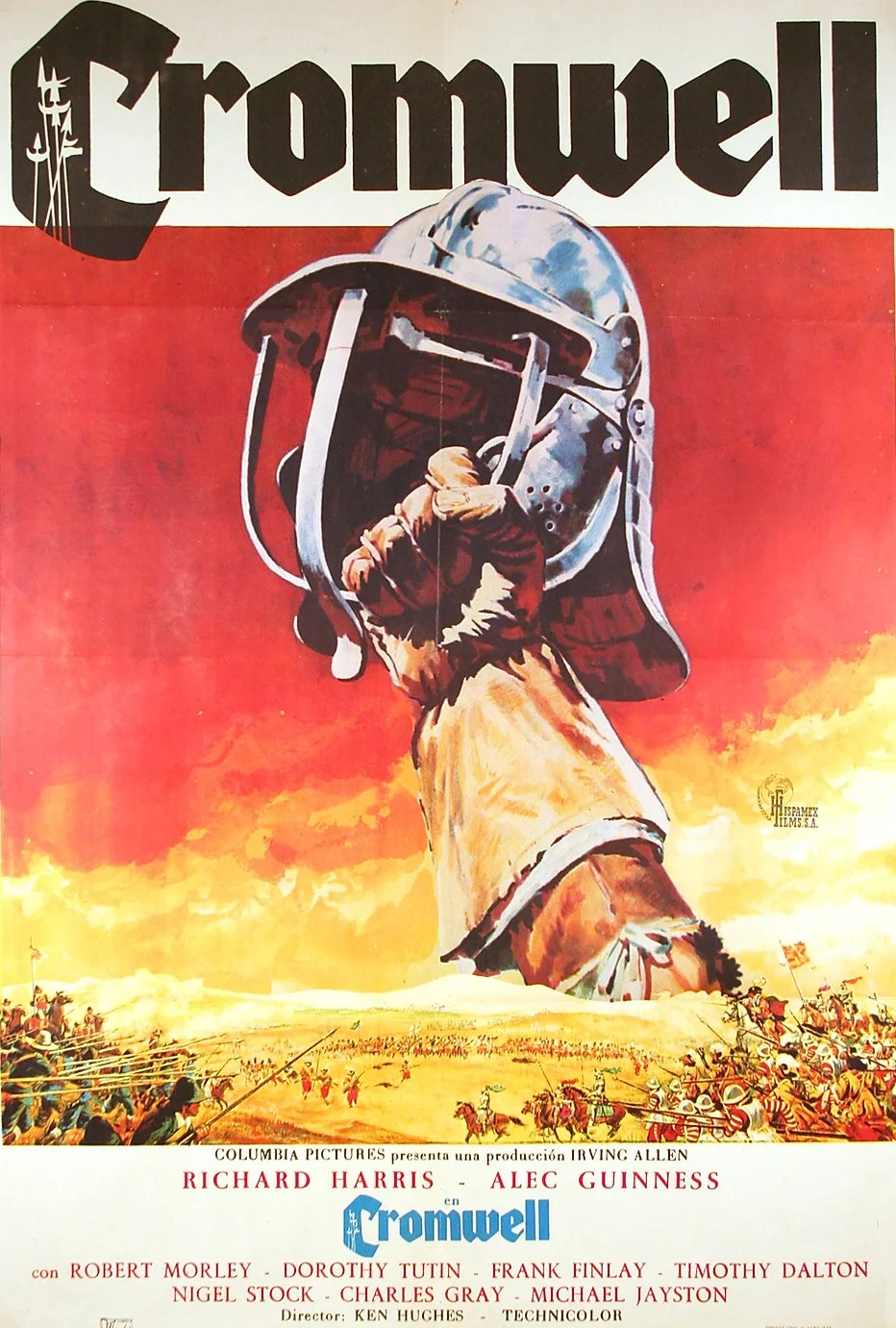 This is British history at its finest with some of the best acting and most terrific battle scenes ever. Because
of the thousands of extras and warlike atmosphere, it's reminiscent of Braveheart minus a love story. The
British production deservingly won an Oscar for Best Costume Design with approximately 4,000 costumes, 16,000
historical props, and thousands of wigs which were ordered from all over Europe.
This is British history at its finest with some of the best acting and most terrific battle scenes ever. Because
of the thousands of extras and warlike atmosphere, it's reminiscent of Braveheart minus a love story. The
British production deservingly won an Oscar for Best Costume Design with approximately 4,000 costumes, 16,000
historical props, and thousands of wigs which were ordered from all over Europe.
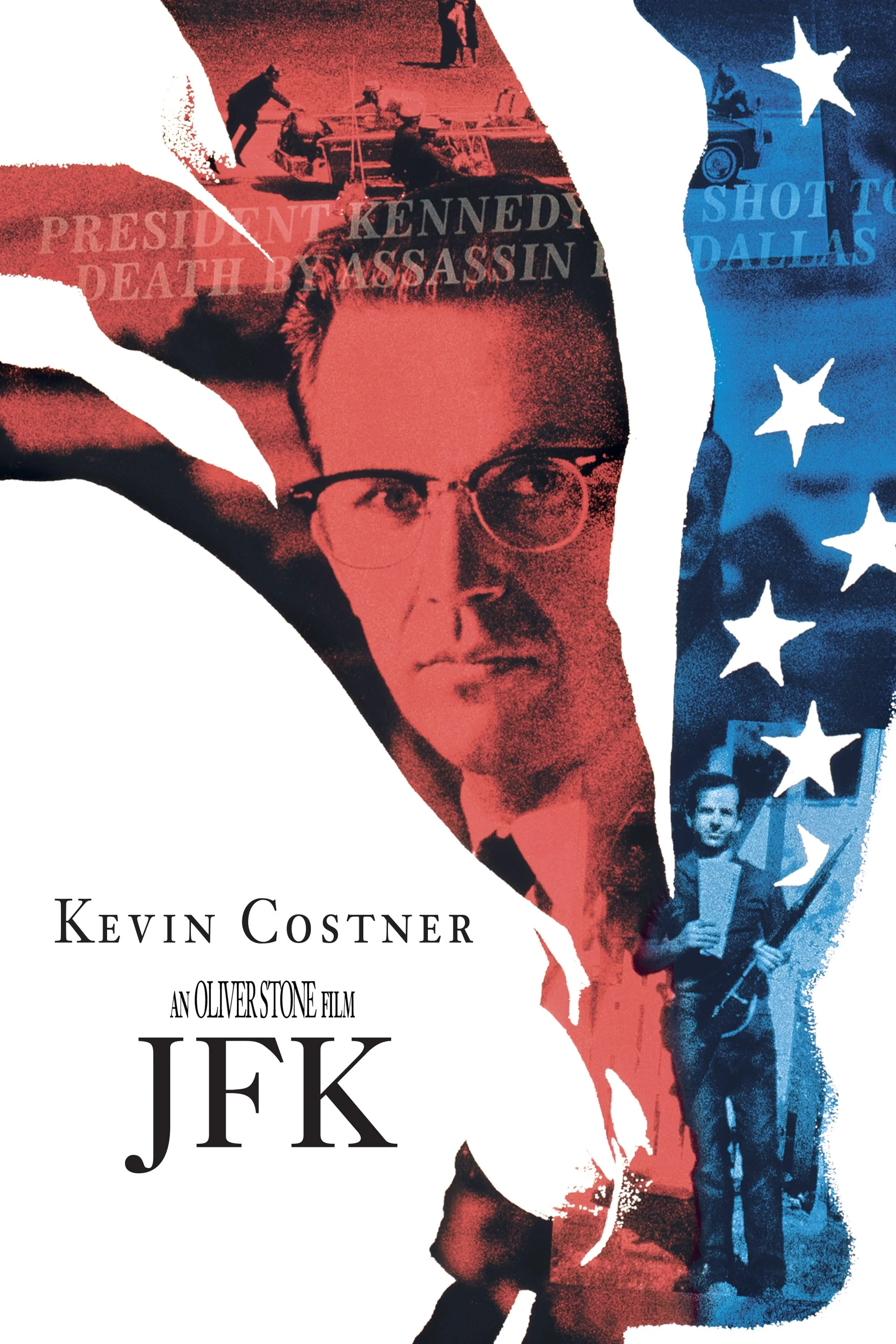 JFK is an incredible masterpiece, representing Oliver Stone's best. Outstanding are the acting, storytelling,
and, most of all, editing. The best moment is when Jim Garrison, after learning the real plot from Donald
Sutherland's character, summed up the startling discovery by saying, "The size of this is...beyond me."
JFK is an incredible masterpiece, representing Oliver Stone's best. Outstanding are the acting, storytelling,
and, most of all, editing. The best moment is when Jim Garrison, after learning the real plot from Donald
Sutherland's character, summed up the startling discovery by saying, "The size of this is...beyond me."
 One of the strangest things I've noticed in regard to Martin Luther King, Jr., is everybody knows who he was, but
most don't have any idea of what he specifically did or the events he was involved with. Therefore, King
does an outstanding job of summarizing them all in a five-hour biopic with an exceptional performance by Paul
Winfield.
One of the strangest things I've noticed in regard to Martin Luther King, Jr., is everybody knows who he was, but
most don't have any idea of what he specifically did or the events he was involved with. Therefore, King
does an outstanding job of summarizing them all in a five-hour biopic with an exceptional performance by Paul
Winfield.
 Full of action and war, The Last of the Mohicans is a unique masterpiece with a love story to boot.
Although it's the best Daniel Day-Lewis movie, the best Michael Mann movie, the best American Indian movie, and
the best Colonial movie, nothing is more impressive than Wes Studi's performance as Magua. It's so good that he
was sadly robbed of an Oscar. Of course, the title says it all.
Full of action and war, The Last of the Mohicans is a unique masterpiece with a love story to boot.
Although it's the best Daniel Day-Lewis movie, the best Michael Mann movie, the best American Indian movie, and
the best Colonial movie, nothing is more impressive than Wes Studi's performance as Magua. It's so good that he
was sadly robbed of an Oscar. Of course, the title says it all.
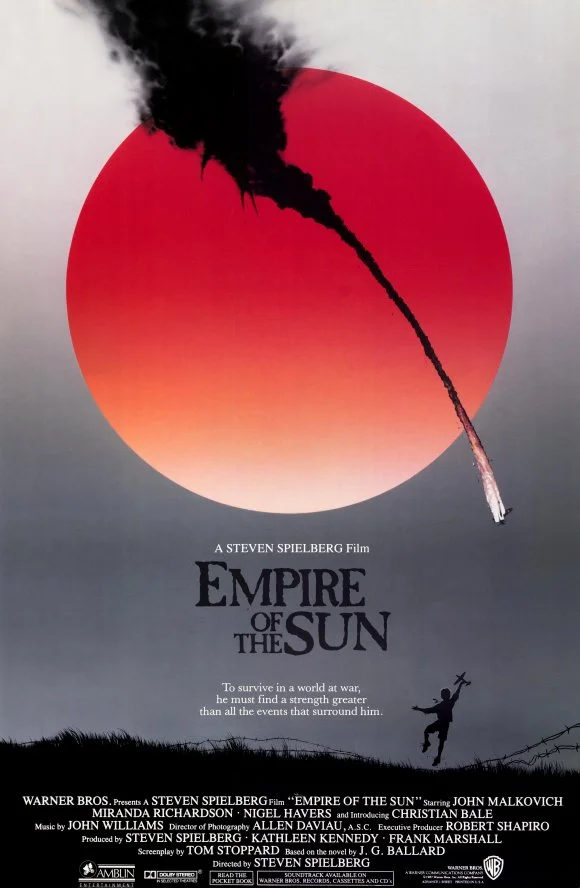 There's a lot of David Lean in Empire of the Sun, thanks to the top-notch cinematography. Christian Bale
gives a performance that's on par with Peter O'Toole of Lawrence of Arabia. There are a lot of similarities
between both films as well. Steven Spielberg is the best director ever because of his ability to create a
masterpiece in any genre.
There's a lot of David Lean in Empire of the Sun, thanks to the top-notch cinematography. Christian Bale
gives a performance that's on par with Peter O'Toole of Lawrence of Arabia. There are a lot of similarities
between both films as well. Steven Spielberg is the best director ever because of his ability to create a
masterpiece in any genre.
 Is The Big Country the Citizen Kane of Western films? Absolutely yes. A favorite of U.S. President
Dwight D. Eisenhower who gave the movie four consecutive showings at the White House, The Big Country is
one of the best examples of how a widescreen shot should be properly implemented, showcasing the vast land of
California and Arizona. It's what makes an epic that would do favors for all characters involved.
Is The Big Country the Citizen Kane of Western films? Absolutely yes. A favorite of U.S. President
Dwight D. Eisenhower who gave the movie four consecutive showings at the White House, The Big Country is
one of the best examples of how a widescreen shot should be properly implemented, showcasing the vast land of
California and Arizona. It's what makes an epic that would do favors for all characters involved.
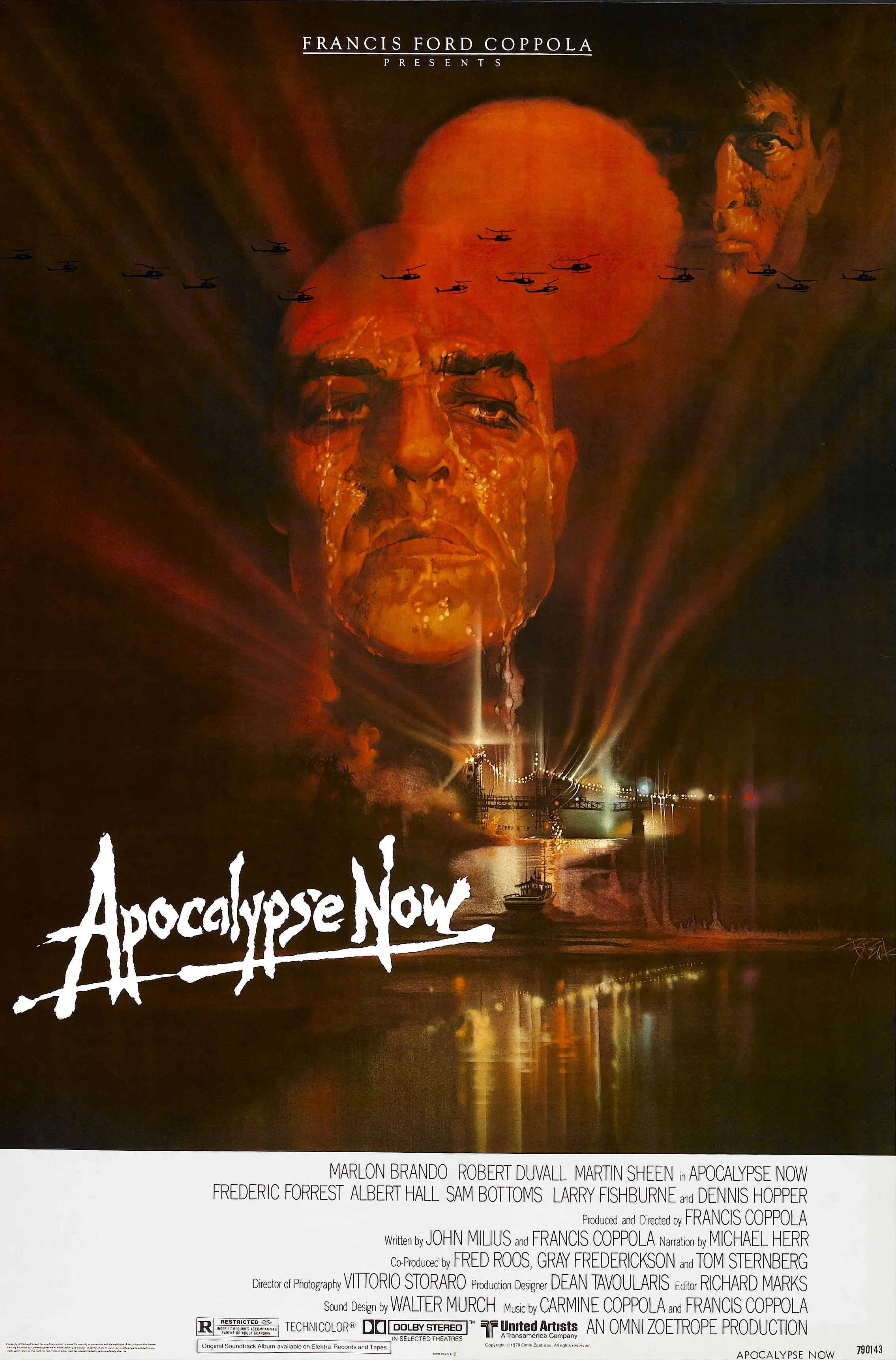 Full of iconic scenes and lines, Apocalypse Now is among the best of the decade as it tops madness with
more madness. That's what the movie is all about: the exploration of insanity in the journey toward the heart
of darkness. Making a case for the deterioration of Marlon Brando's mind may not be far-fetched, either.
Full of iconic scenes and lines, Apocalypse Now is among the best of the decade as it tops madness with
more madness. That's what the movie is all about: the exploration of insanity in the journey toward the heart
of darkness. Making a case for the deterioration of Marlon Brando's mind may not be far-fetched, either.
 A landmark in black cinema, The Color Purple captures the human spirit so well that it's a strange yet
moving work of art with powerful scenes. Making her astonishing film debut is Whoopi Goldberg. There's so much
for the characters to overcome such as domestic violence, incest, forced separation, rape, slavery, pedophilia,
poverty, racism, and sexism.
A landmark in black cinema, The Color Purple captures the human spirit so well that it's a strange yet
moving work of art with powerful scenes. Making her astonishing film debut is Whoopi Goldberg. There's so much
for the characters to overcome such as domestic violence, incest, forced separation, rape, slavery, pedophilia,
poverty, racism, and sexism.
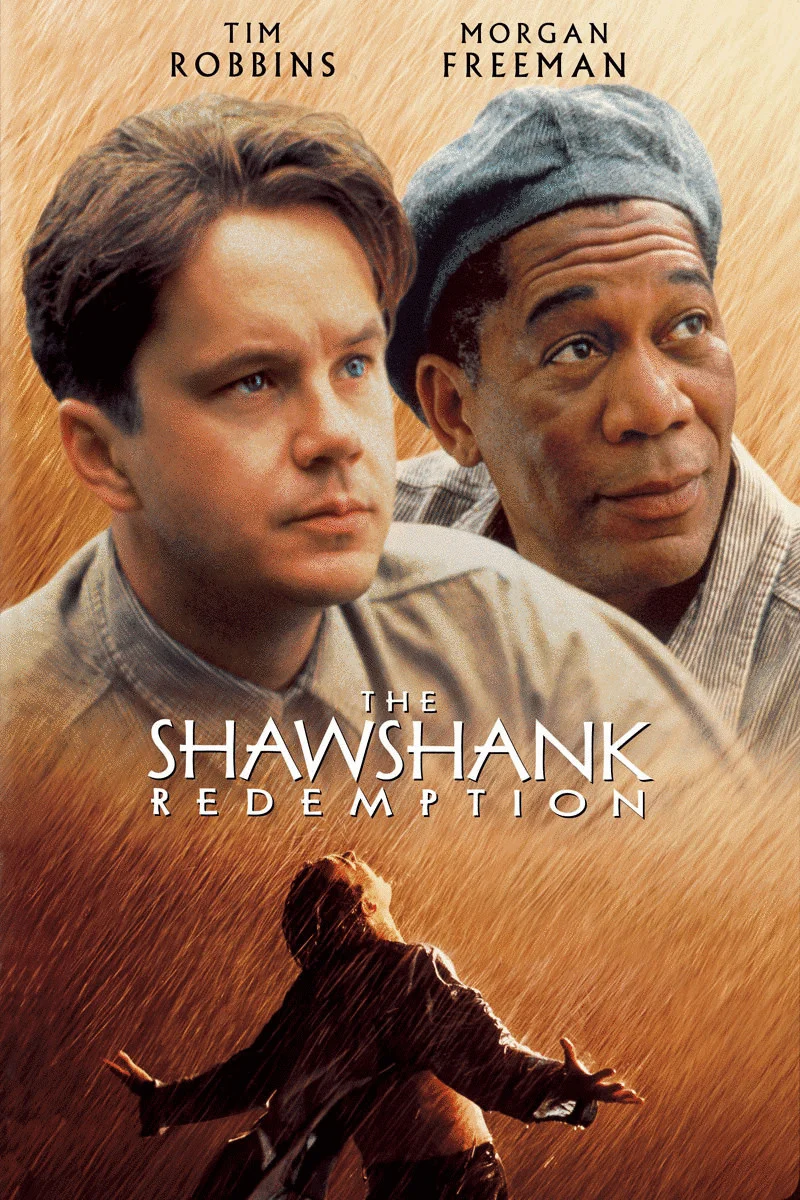 Benefitting from Frank Darabont's well-written screenplay and powerful direction, Tim Robbins' and Morgan Freeman's
performances help lift the film off the ground and let it fly like the human spirit. If anything, it's the Red's
voice-over narration that makes The Shawshank Redemption so good. Roger Deakins' cinematography gives the
film a special feel as it enters the classic territory.
Benefitting from Frank Darabont's well-written screenplay and powerful direction, Tim Robbins' and Morgan Freeman's
performances help lift the film off the ground and let it fly like the human spirit. If anything, it's the Red's
voice-over narration that makes The Shawshank Redemption so good. Roger Deakins' cinematography gives the
film a special feel as it enters the classic territory.
 Talk about a powerful film. The producer of Halloween, Moustapha Akkad, had one goal in mind when he set
out to direct an epic in Lion of the Desert which involved thousands of extras, armored vehicles, and
horses: to present the events as they happened with a high level of realism. It was all accomplished right in
the middle of the Libyan desert. Anthony Quinn is every bit as spectacular as Omar Mukhtar.
Talk about a powerful film. The producer of Halloween, Moustapha Akkad, had one goal in mind when he set
out to direct an epic in Lion of the Desert which involved thousands of extras, armored vehicles, and
horses: to present the events as they happened with a high level of realism. It was all accomplished right in
the middle of the Libyan desert. Anthony Quinn is every bit as spectacular as Omar Mukhtar.
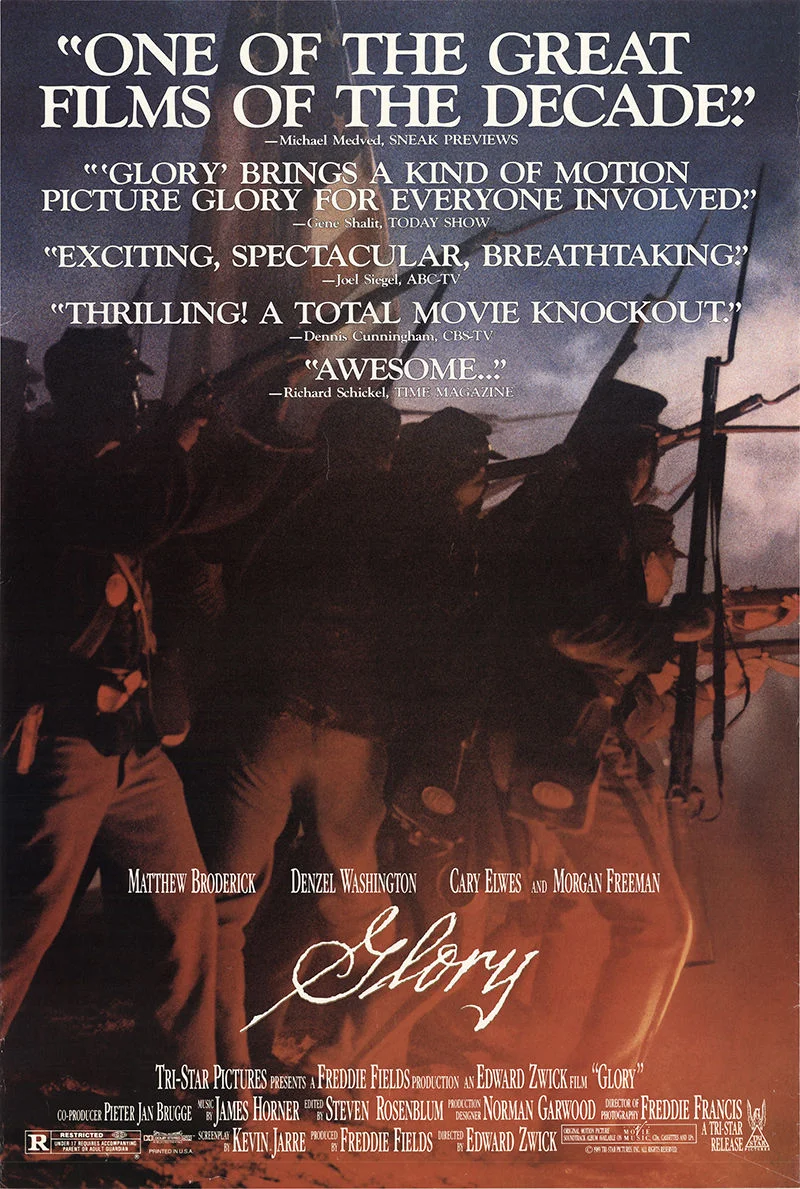 Riveting and moving, Glory is the top film of 1989 and ranks among the very best of the decade. Without
doubt, the most spectacular performance comes from Denzel Washington who clinched the Oscar during the flogging
scene. The 54th's assault on Fort Wagner underscores how dramatic the whole thing is. The night before is
incredible because these men knew they were going to die and felt prepared about it.
Riveting and moving, Glory is the top film of 1989 and ranks among the very best of the decade. Without
doubt, the most spectacular performance comes from Denzel Washington who clinched the Oscar during the flogging
scene. The 54th's assault on Fort Wagner underscores how dramatic the whole thing is. The night before is
incredible because these men knew they were going to die and felt prepared about it.
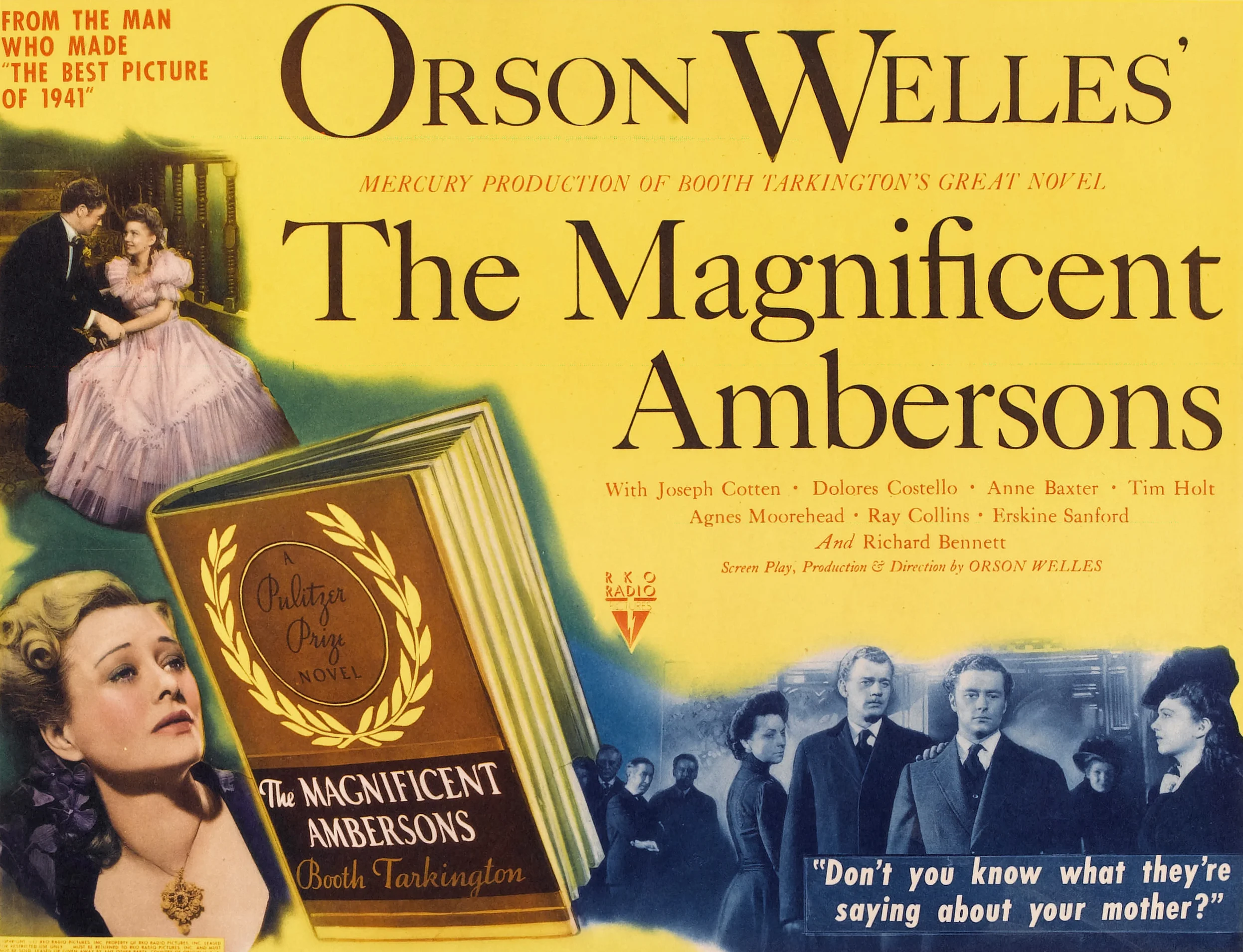 If you can't get enough of Citizen Kane, this one promises you more of the same. Written by Orson Welles
that's adapted from Booth Tarkington's novel, the story of The Magnificent Ambersons is sweeping,
innovative, and captivating which is coupled with a wonderful raconteur style. He was the master of advanced,
complicated scenes.
If you can't get enough of Citizen Kane, this one promises you more of the same. Written by Orson Welles
that's adapted from Booth Tarkington's novel, the story of The Magnificent Ambersons is sweeping,
innovative, and captivating which is coupled with a wonderful raconteur style. He was the master of advanced,
complicated scenes.
 Having one of the greatest ensemble casts ever, Nashville is so good that it's a panorama of everything
that occurs in the country-western music world. The ending, after the assassination happens, is interesting
because the people can take away the power of what just occurred and let the positive dominate the scene.
Having one of the greatest ensemble casts ever, Nashville is so good that it's a panorama of everything
that occurs in the country-western music world. The ending, after the assassination happens, is interesting
because the people can take away the power of what just occurred and let the positive dominate the scene.
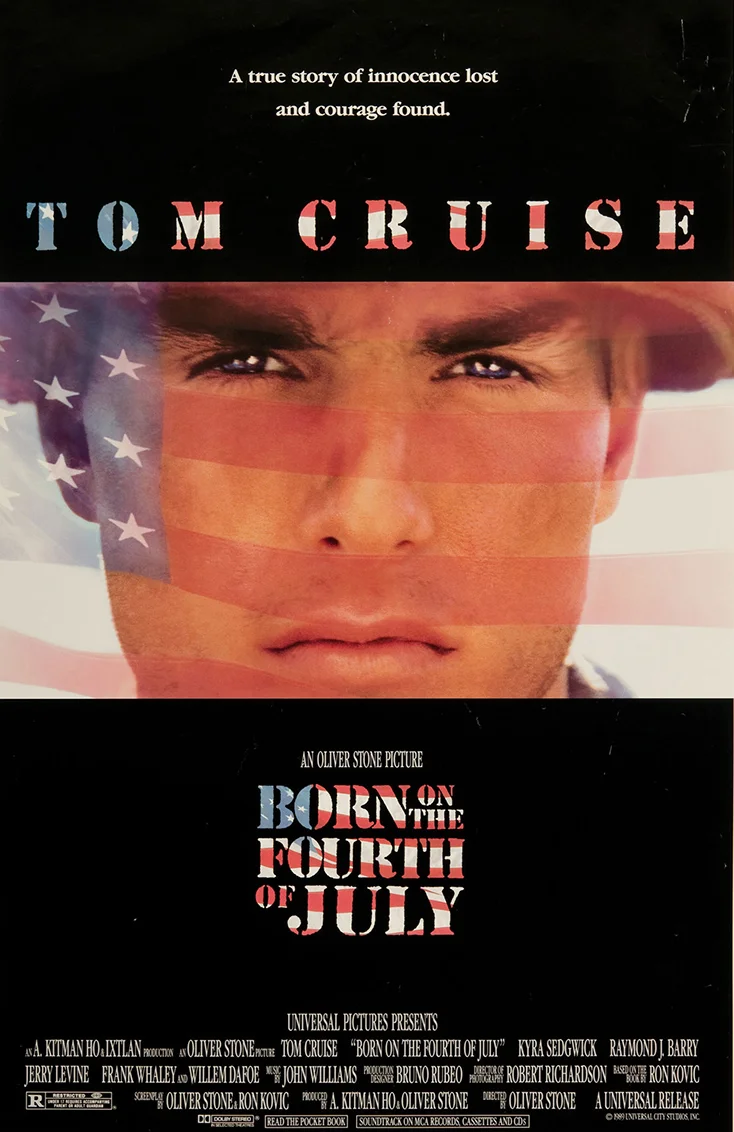 An epic of Ron Kovic's life with lots of highs and lows, Born on the Fourth of July is the one Tom Cruise
will be remembered for eternity. It's to Oliver Stone's credit for making the film seamless and moving. He also
takes advantage of Ron Kovic's autobiographical story to tell how one disabled Vietnam veteran went from an
idealistic patriot to a cynical, jaded hater because of the lies that were spoon-fed to him.
An epic of Ron Kovic's life with lots of highs and lows, Born on the Fourth of July is the one Tom Cruise
will be remembered for eternity. It's to Oliver Stone's credit for making the film seamless and moving. He also
takes advantage of Ron Kovic's autobiographical story to tell how one disabled Vietnam veteran went from an
idealistic patriot to a cynical, jaded hater because of the lies that were spoon-fed to him.
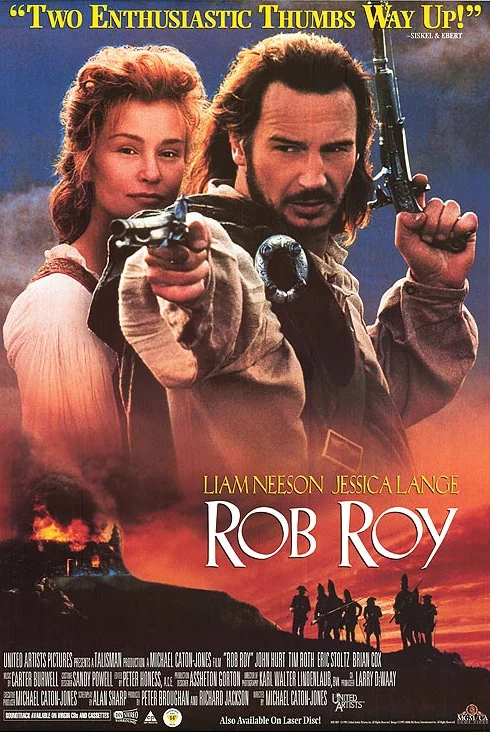 Rob Roy is one of the best swashbuckling films made. The writing, the acting, and the stabs at primitiveness
are uniformly excellent. Then, there's the larger-than-life Rob Roy against the backdrop of the Scottish Highlands.
The sword battle at the end is perfectly choreographed and is thus the best ever. Tim Roth is unbelievable,
garnering an Oscar nomination.
Rob Roy is one of the best swashbuckling films made. The writing, the acting, and the stabs at primitiveness
are uniformly excellent. Then, there's the larger-than-life Rob Roy against the backdrop of the Scottish Highlands.
The sword battle at the end is perfectly choreographed and is thus the best ever. Tim Roth is unbelievable,
garnering an Oscar nomination.
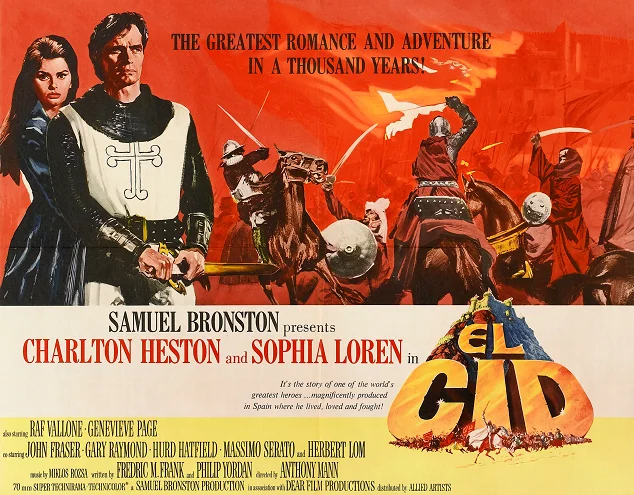 Only Charlton Heston can pull it off, and that's why he's the greatest actor of epic pictures. Shot on location
in Spain with 7,000 extras and 10,000 costumes, El Cid is a lavishly made epic picture about a real life
warrior who was a national hero of Spain during the 11th century.
Only Charlton Heston can pull it off, and that's why he's the greatest actor of epic pictures. Shot on location
in Spain with 7,000 extras and 10,000 costumes, El Cid is a lavishly made epic picture about a real life
warrior who was a national hero of Spain during the 11th century.
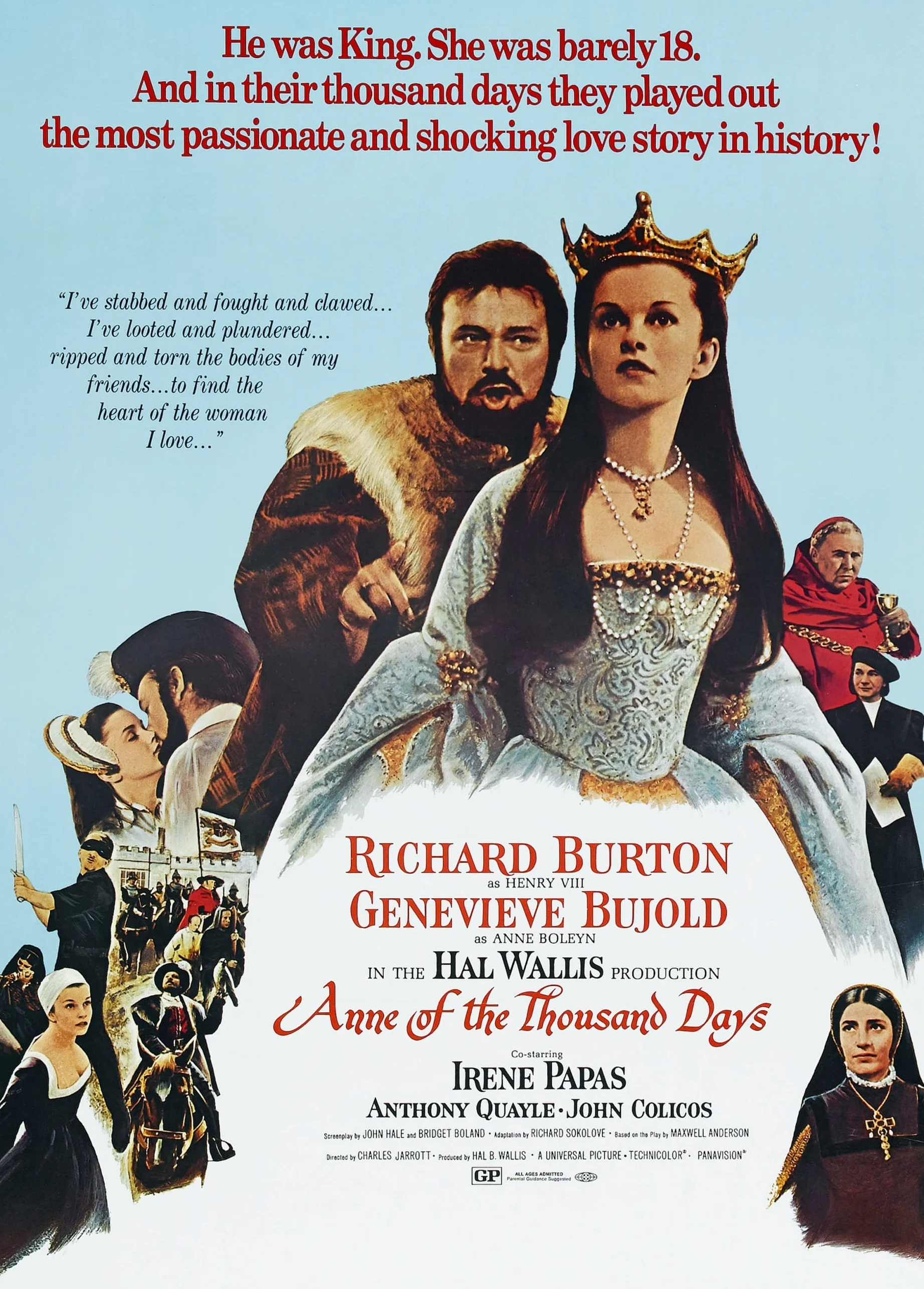 If I have to pick a film with the best-looking costumes, it's Anne of the Thousand Days. Hence, it's not
a surprise this one received the only Oscar win, out of ten nominations, for Best Costume Design which went to
Margaret Furse. The cinematography is a bonus as well. Anne of the Thousand Days is a resplendent picture
that's first-rate royalty entertainment.
If I have to pick a film with the best-looking costumes, it's Anne of the Thousand Days. Hence, it's not
a surprise this one received the only Oscar win, out of ten nominations, for Best Costume Design which went to
Margaret Furse. The cinematography is a bonus as well. Anne of the Thousand Days is a resplendent picture
that's first-rate royalty entertainment.
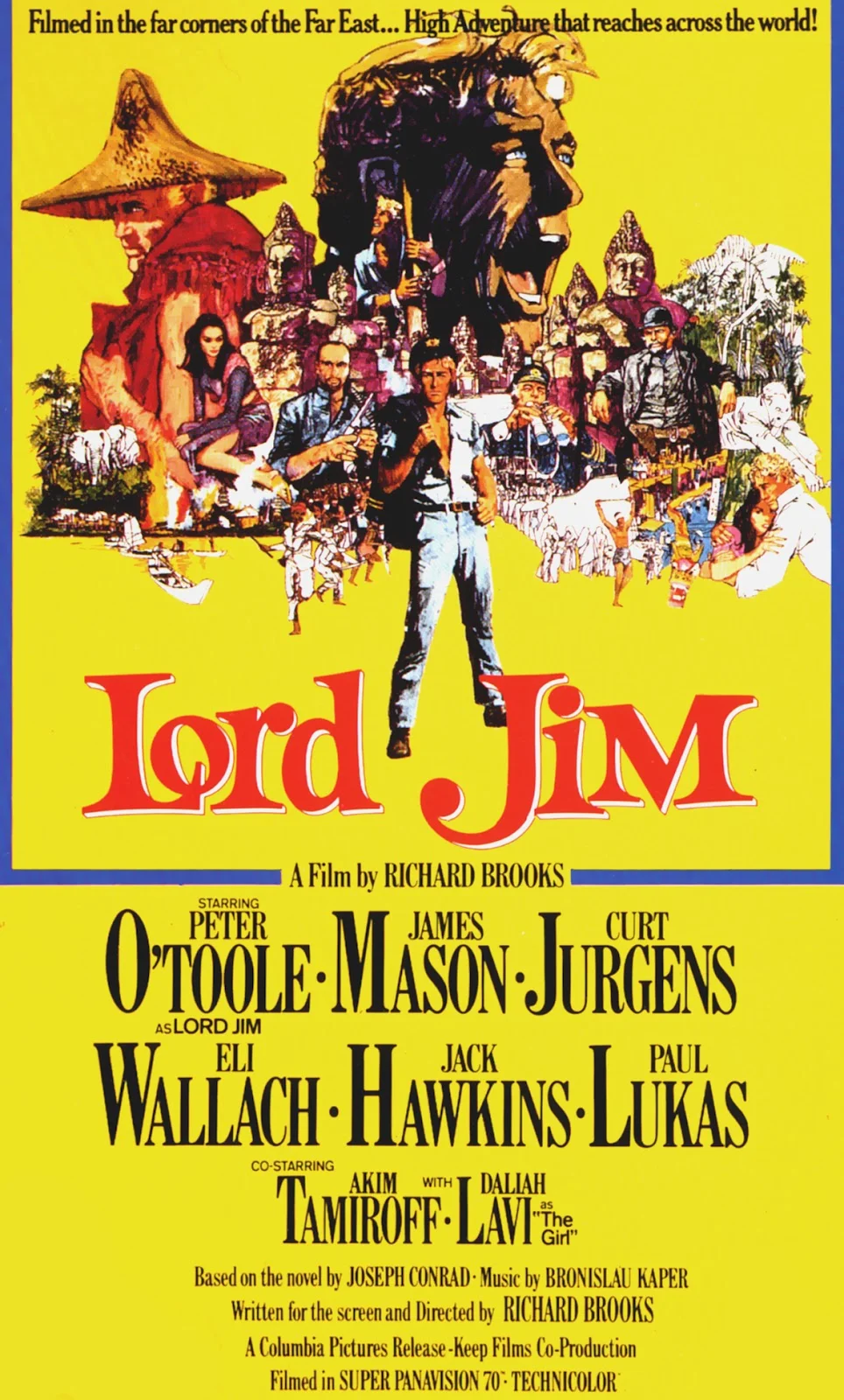 If you can't get enough of Peter O'Toole in Lawrence of Arabia, then make Lord Jim your next fix.
He can act and is assuredly capable of leading an epic. Freddie Young did the cinematography for
Lawrence of Arabia and does it again for Lord Jim which is incredible. Because of Joseph Conrad's
writing, parts of the film are reminiscent of Apocalypse Now.
If you can't get enough of Peter O'Toole in Lawrence of Arabia, then make Lord Jim your next fix.
He can act and is assuredly capable of leading an epic. Freddie Young did the cinematography for
Lawrence of Arabia and does it again for Lord Jim which is incredible. Because of Joseph Conrad's
writing, parts of the film are reminiscent of Apocalypse Now.
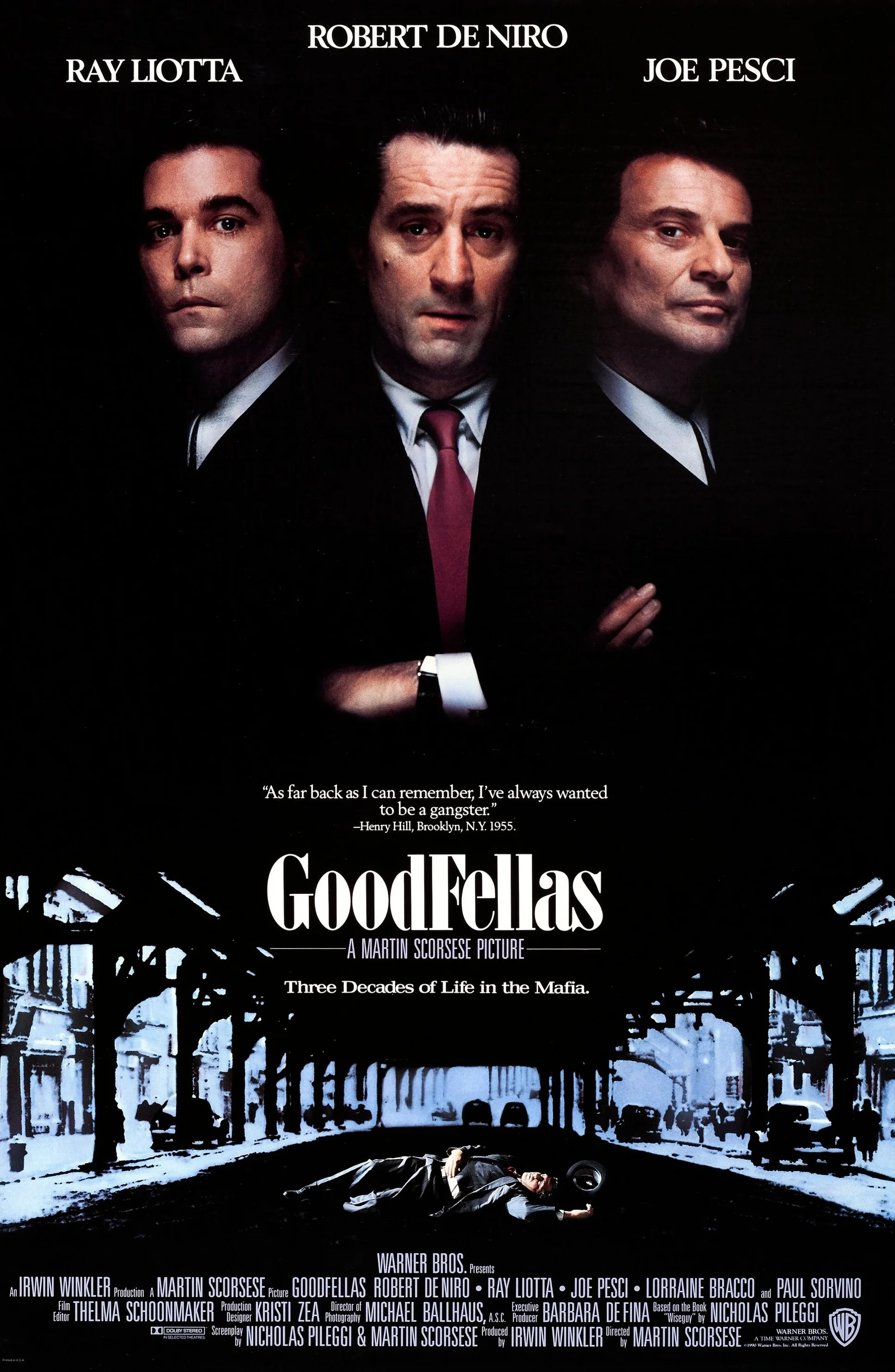 Without doubt, Goodfellas is the hardest-hitting Mafia picture made. There's nothing like it. The first
two minutes, complemented by Saul Bass' titles, is what sets the tone for the rest of the film. In order to get
Goodfellas made, Martin Scorsese called Nicholas Pileggi, the author of Wiseguy, to say, "I've been
waiting for this book my entire life," which was met with "I've been waiting for this phone call my entire life."
Without doubt, Goodfellas is the hardest-hitting Mafia picture made. There's nothing like it. The first
two minutes, complemented by Saul Bass' titles, is what sets the tone for the rest of the film. In order to get
Goodfellas made, Martin Scorsese called Nicholas Pileggi, the author of Wiseguy, to say, "I've been
waiting for this book my entire life," which was met with "I've been waiting for this phone call my entire life."
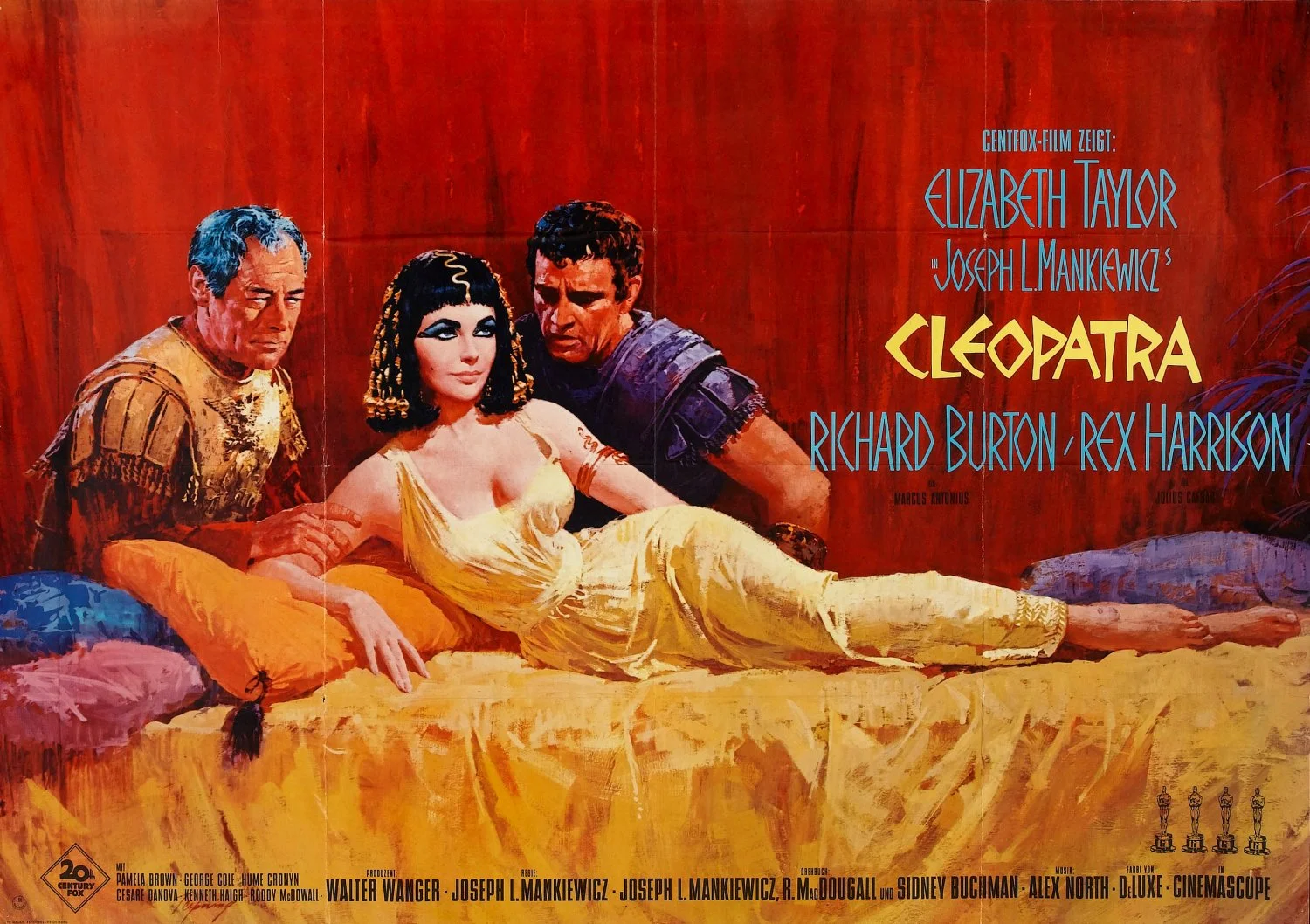 Despite the insane running length of 251 minutes, Cleopatra is an epic, no question. The film deserves
the Oscar for Best Cinematography because it's spectacular. In fact, the most winning feature is Elizabeth Taylor's
breasts. It's also famous for the start of Elizabeth Taylor-Richard Burton relationship that captivated the world
all over for many years.
Despite the insane running length of 251 minutes, Cleopatra is an epic, no question. The film deserves
the Oscar for Best Cinematography because it's spectacular. In fact, the most winning feature is Elizabeth Taylor's
breasts. It's also famous for the start of Elizabeth Taylor-Richard Burton relationship that captivated the world
all over for many years.
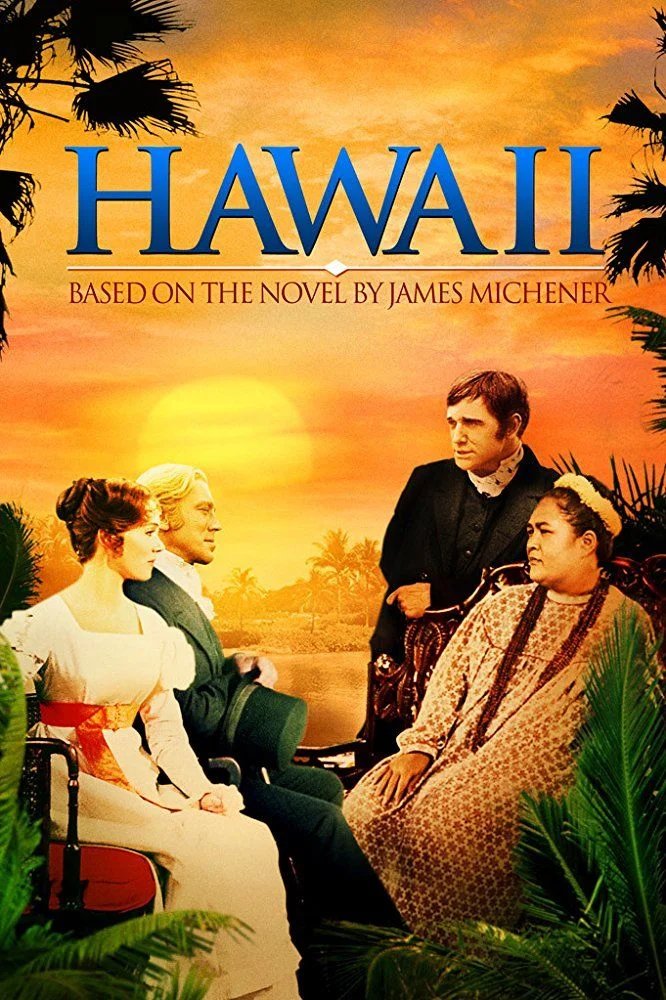 I was thinking of Columbus' voyage to the New World and how it ruined many cultures in the western hemisphere
by indirectly introducing disease, imperialism, and eradication. Well, Hawaii is like that. An added
effect to that idea is the usage of missionaries in which I've found controversial because of their insistence
on the natives that accepting Christianity is the only way to live without sin.
I was thinking of Columbus' voyage to the New World and how it ruined many cultures in the western hemisphere
by indirectly introducing disease, imperialism, and eradication. Well, Hawaii is like that. An added
effect to that idea is the usage of missionaries in which I've found controversial because of their insistence
on the natives that accepting Christianity is the only way to live without sin.
 Before there were Waterworld and The Postman, there was Robin Hood: Prince of Thieves,
an enjoyable fanfare in all aspects. The in/exterior sets are beautifully done to give it an Old English feel.
Ditto for the costumes. Buoyed by the wonderful cinematography and the well-written language, it's cool to see
the archers readying to shoot the flaming arrows during the siege of the families' homeground in Sherwood Forest.
Before there were Waterworld and The Postman, there was Robin Hood: Prince of Thieves,
an enjoyable fanfare in all aspects. The in/exterior sets are beautifully done to give it an Old English feel.
Ditto for the costumes. Buoyed by the wonderful cinematography and the well-written language, it's cool to see
the archers readying to shoot the flaming arrows during the siege of the families' homeground in Sherwood Forest.
 The king of high school pictures, Lean on Me is a heartwarming tale that's based on a true story about
how Joe Clark created a storm of controversy by using unconventional methods of discipline at Eastside High in
Paterson, New Jersey, during the 80's. Thanks to Morgan Freeman's stirring performance, it's scene-by-scene
brilliant in a moving way that captures the essence of the human spirit.
The king of high school pictures, Lean on Me is a heartwarming tale that's based on a true story about
how Joe Clark created a storm of controversy by using unconventional methods of discipline at Eastside High in
Paterson, New Jersey, during the 80's. Thanks to Morgan Freeman's stirring performance, it's scene-by-scene
brilliant in a moving way that captures the essence of the human spirit.
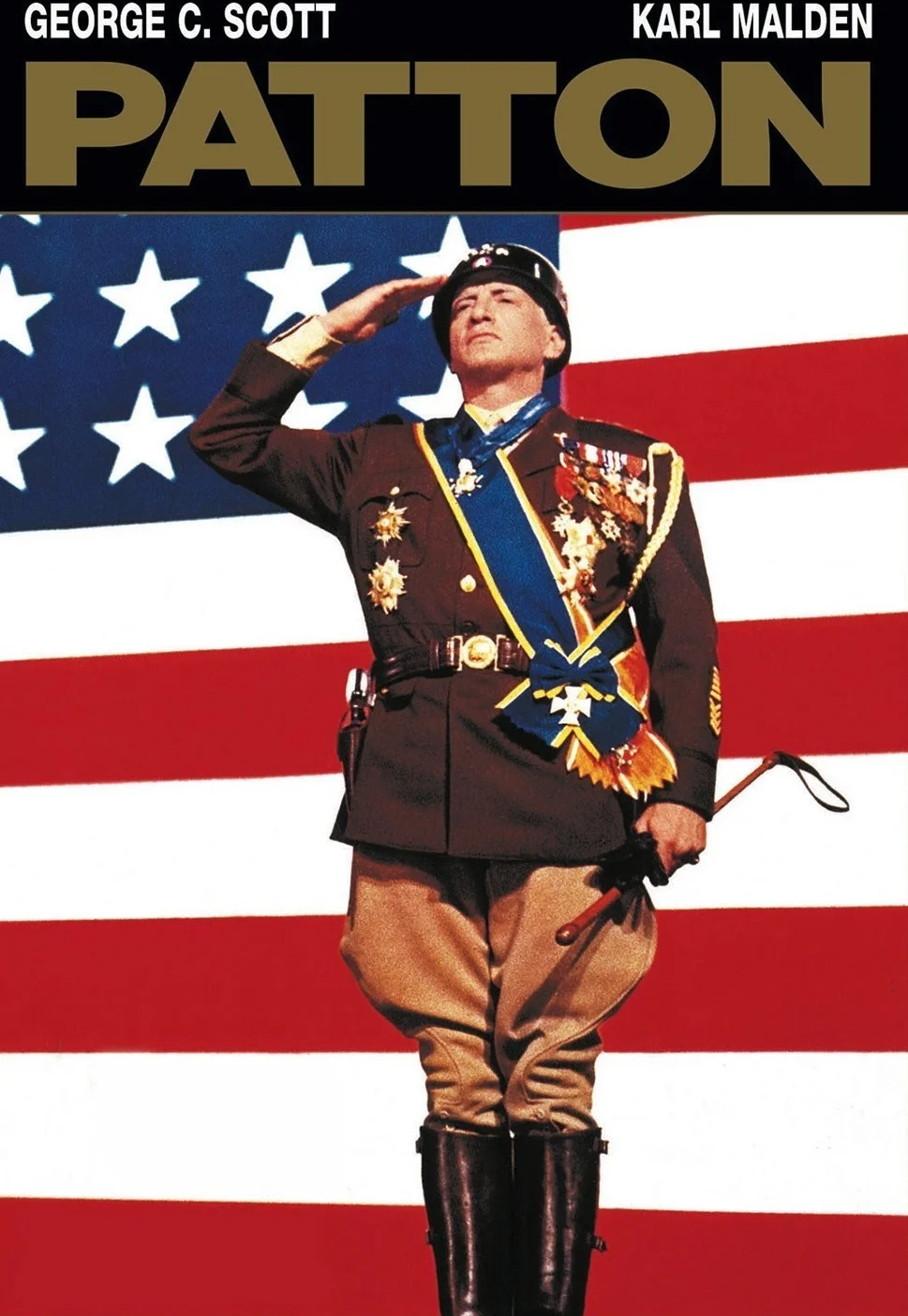 Any biographic sketch of an important yet flawed character is always interesting. And that's the case with
General George S. Patton, the enigmatic gung-ho commander of the United States Seventh Army in the Mediterranean
and European theaters of World War II. It's George C. Scott, winning and then refusing the Oscar for his
performance, who shines the most and proves why he was a remarkable actor of his generation.
Any biographic sketch of an important yet flawed character is always interesting. And that's the case with
General George S. Patton, the enigmatic gung-ho commander of the United States Seventh Army in the Mediterranean
and European theaters of World War II. It's George C. Scott, winning and then refusing the Oscar for his
performance, who shines the most and proves why he was a remarkable actor of his generation.
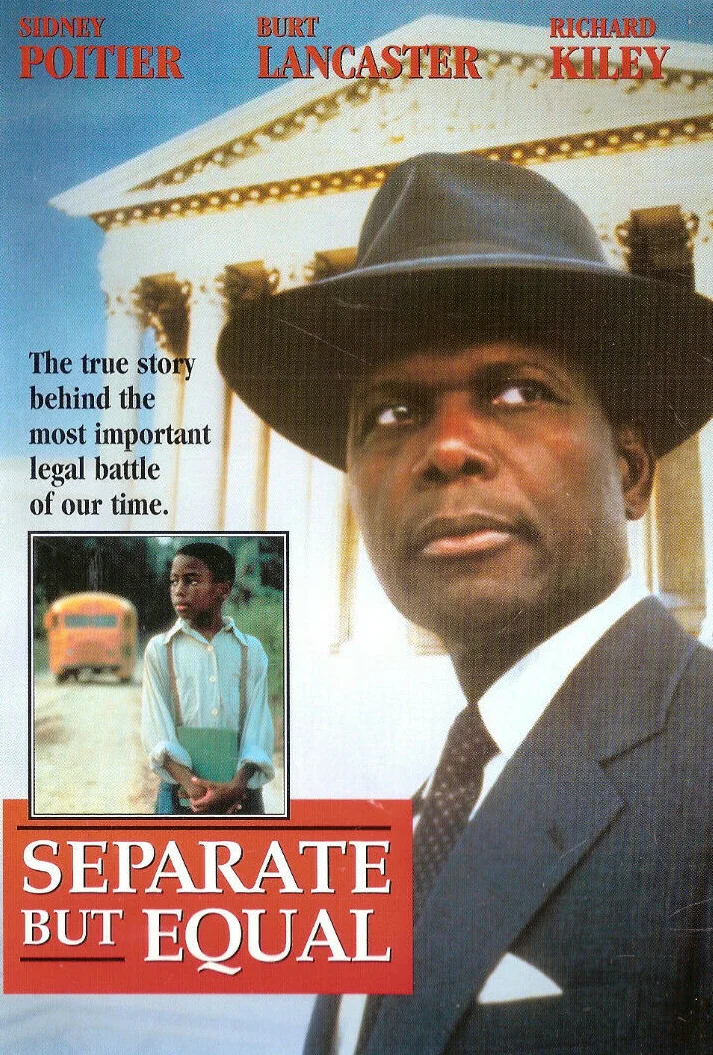 It's the most famous case in U.S. history of education which started with Plessy v. Ferguson and concluded
with Brown v. Board of Education. In between is a 58-year black struggle for equal rights. The final
verdict was the beginning of the end for racial segregation that dominated race relations for so long in the
United States. Hence, there's a lot to learn from this film.
It's the most famous case in U.S. history of education which started with Plessy v. Ferguson and concluded
with Brown v. Board of Education. In between is a 58-year black struggle for equal rights. The final
verdict was the beginning of the end for racial segregation that dominated race relations for so long in the
United States. Hence, there's a lot to learn from this film.